Style comes down to the details, which can also play a practical role. For example, in the cooking area, it’s the kitchen kickboard. It not only ensures a tidy look for the cabinetry but also simplifies cleaning, which is very important for a kitchen. In this article, we will discuss how to choose a decorative strip for the cabinetry, what materials to consider, and whether to match the bottom part with the cabinets.
Choosing a Kickboard for the Kitchen
Materials
– Wood
– MDF and Particleboard
– Aluminum
– Plastic
What It Is
A kickboard is a decorative strip that covers the space between the bottom of the cabinets and the floor. It performs several important functions:
- Prevents water, dust, and crumbs from getting under the kitchen cabinets, which is crucial in a humid environment. This protects the kitchen from mold or unpleasant odors.
- Conceals the legs and fixings of the furniture, making the overall look of the kitchen more aesthetic.
- In some cases, it’s used to install lighting in the cooking area.
Manufacturers offer various heights for the kickboard under the cabinetry, typically 4-6 inches (10-15 cm) [3.94-5.91 inches]. Such a strip is usually sufficient to fully cover unsightly legs, hoses, or pipes. Of course, you can choose not to install it, but in this case, the furniture may look untidy and as if it’s unfinished.
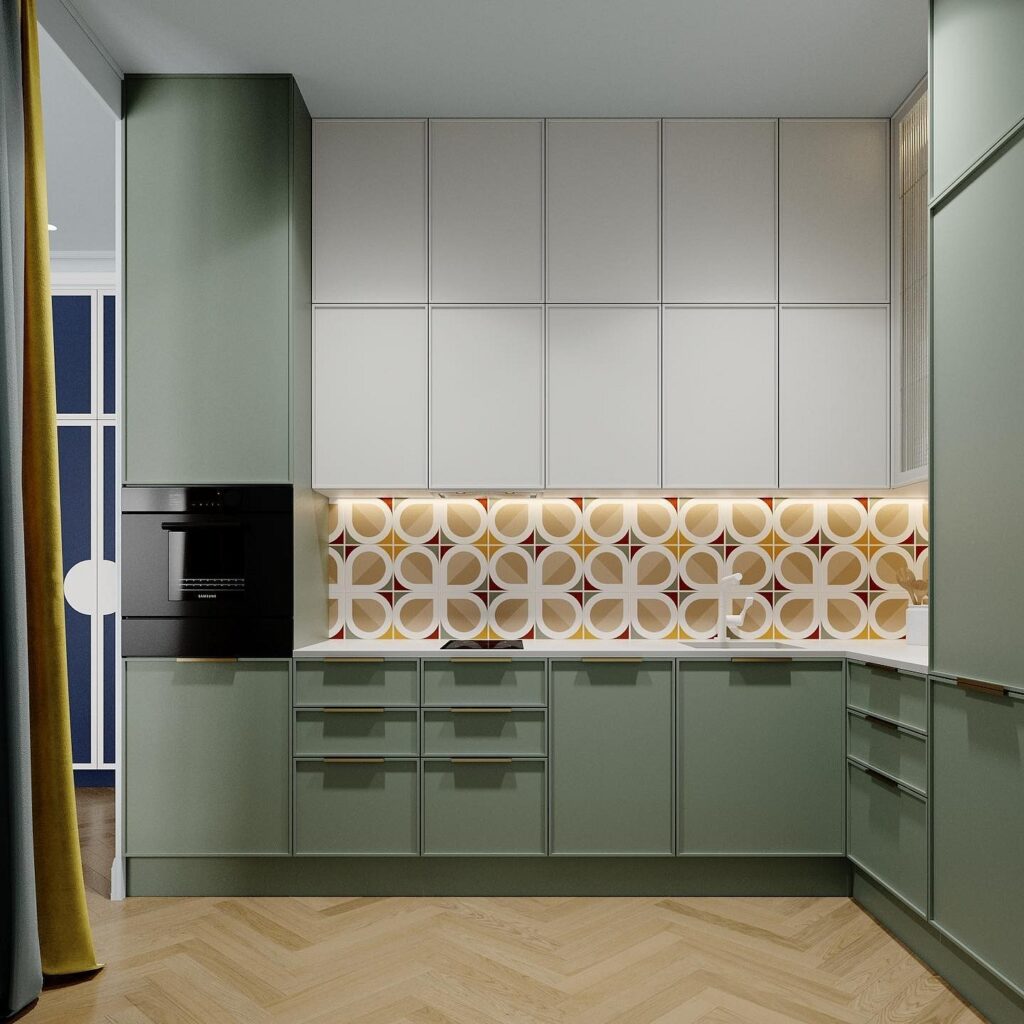
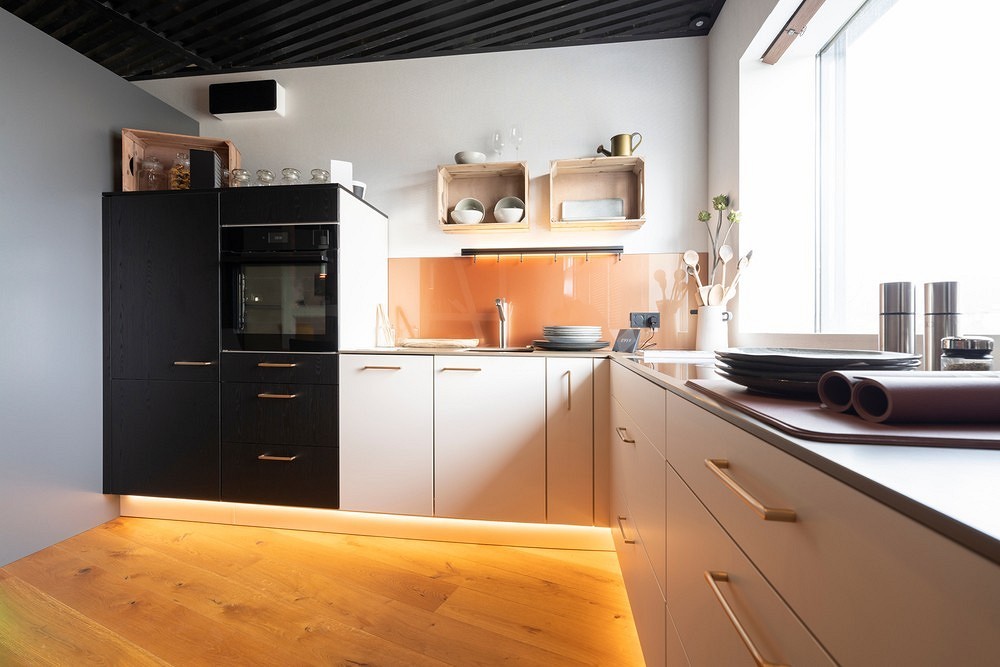
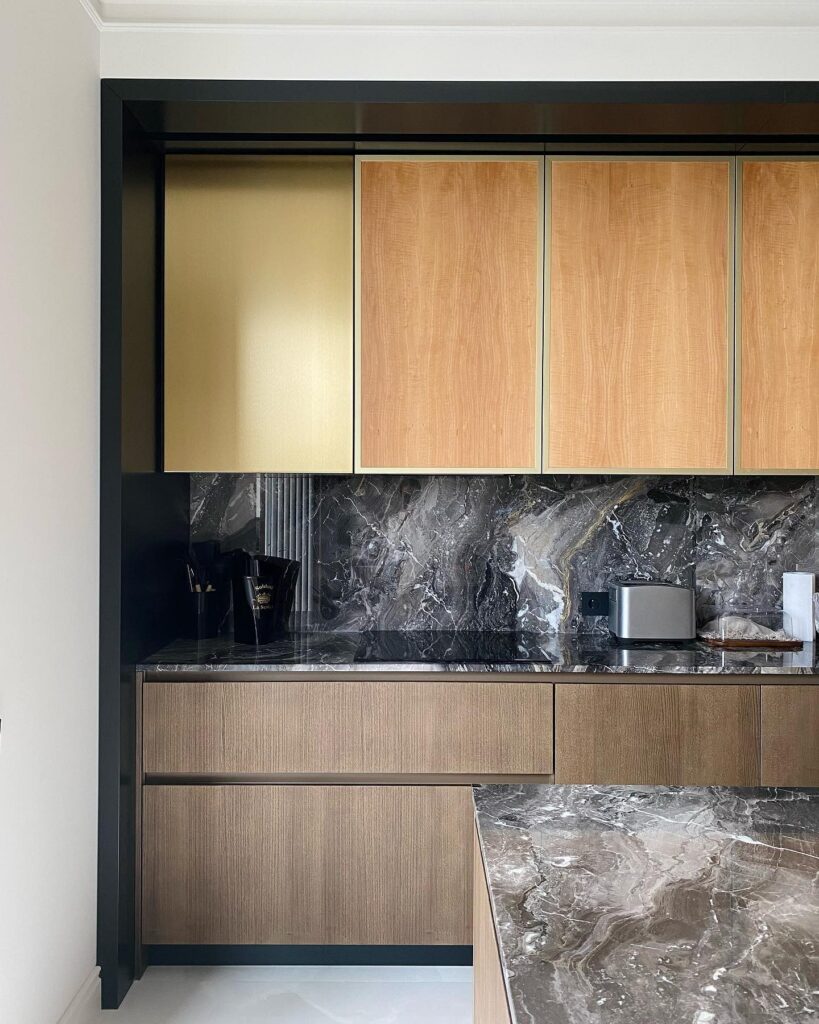
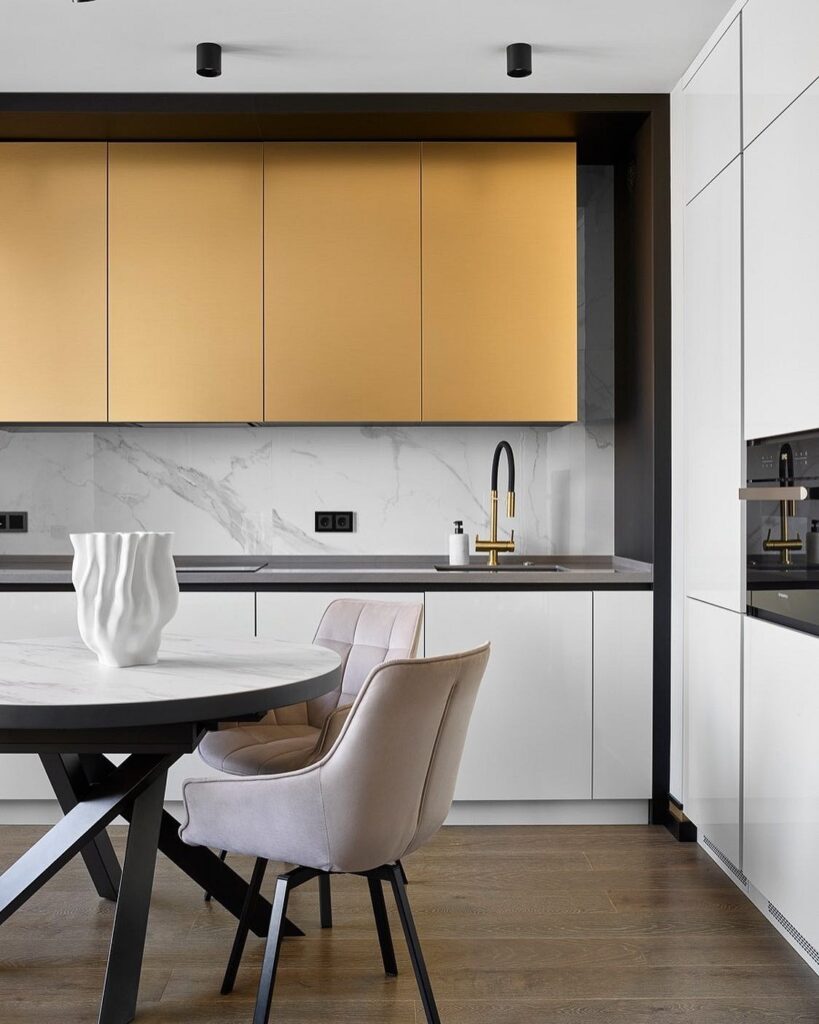

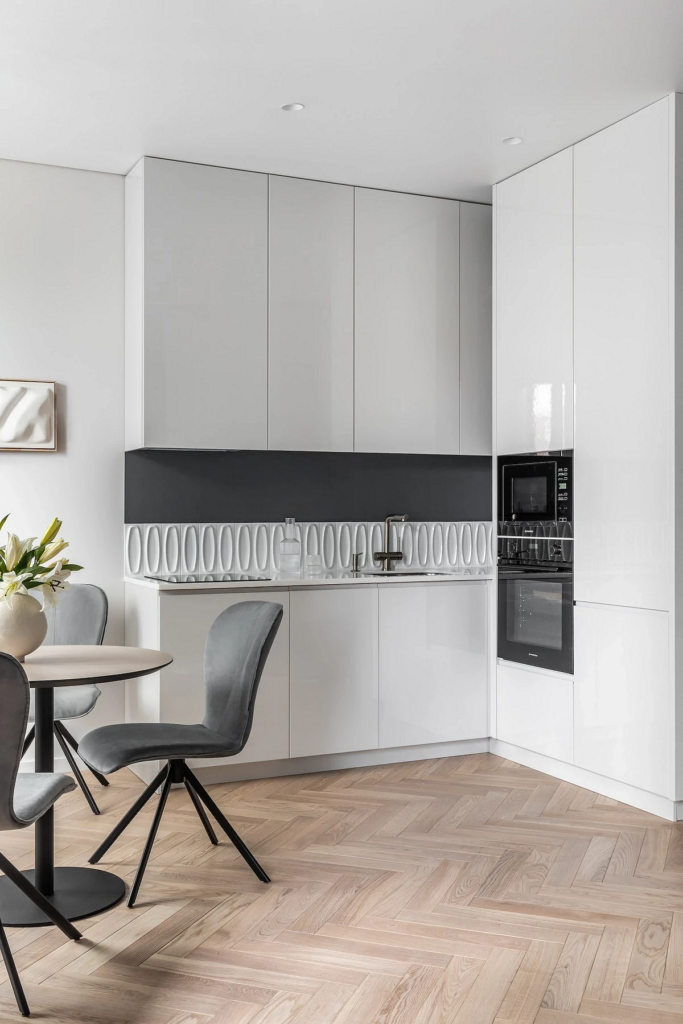
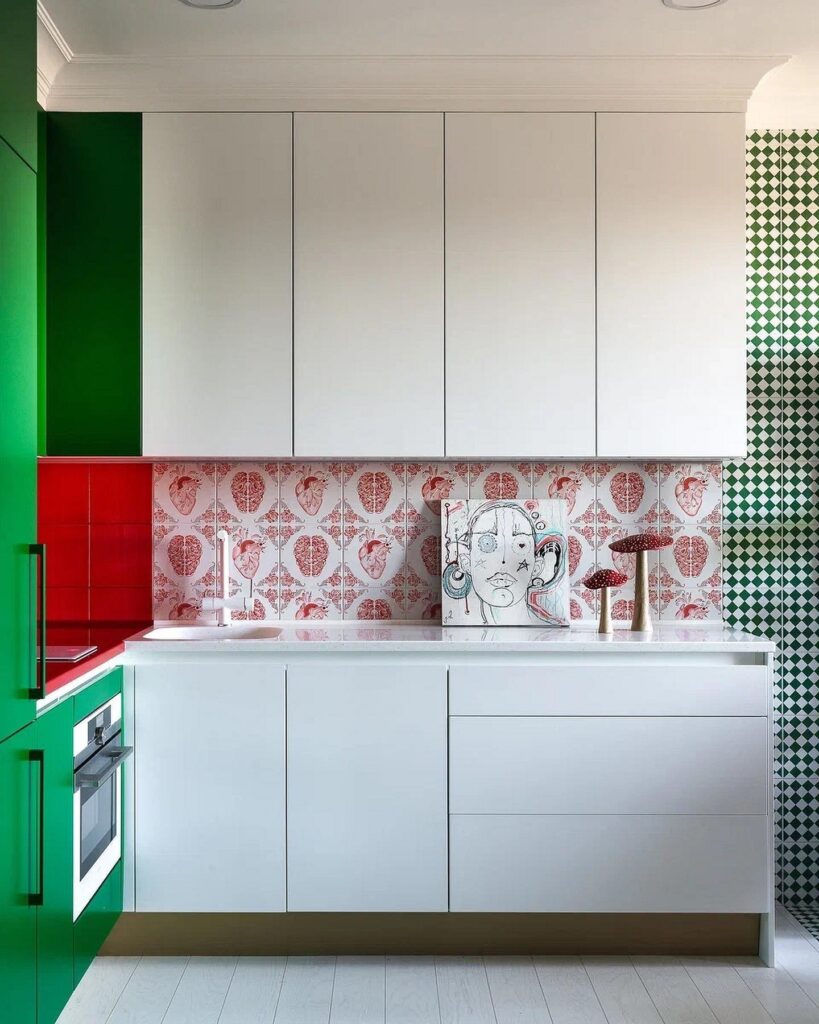
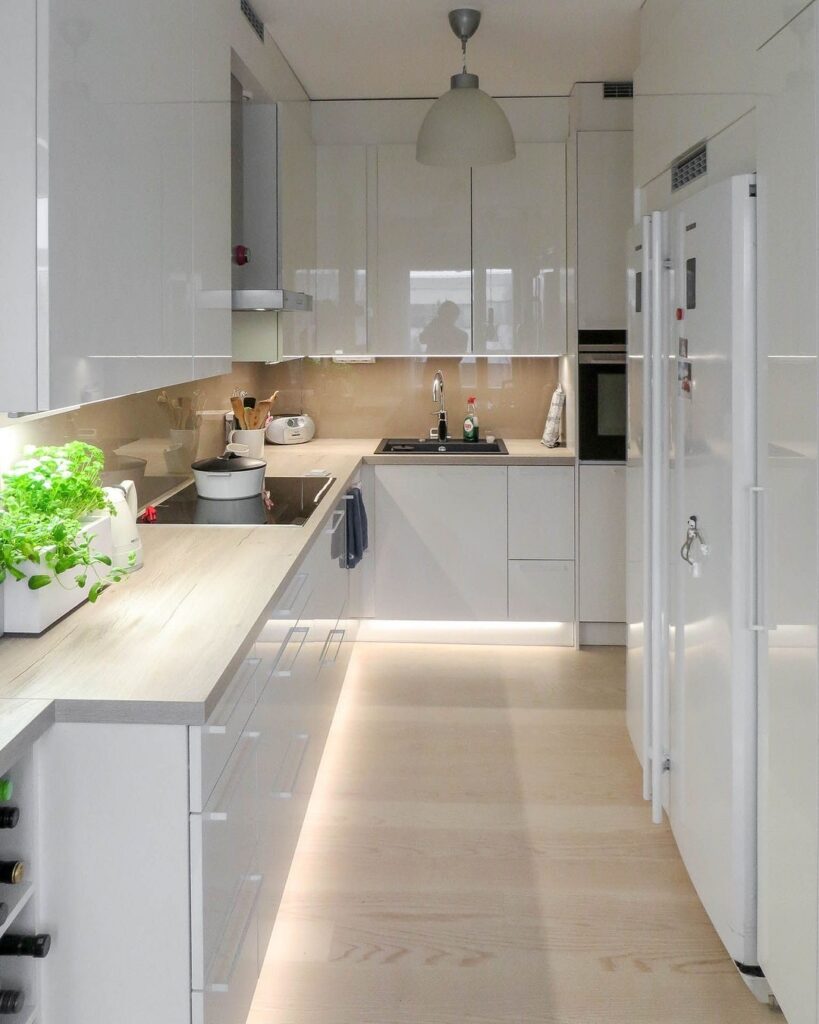
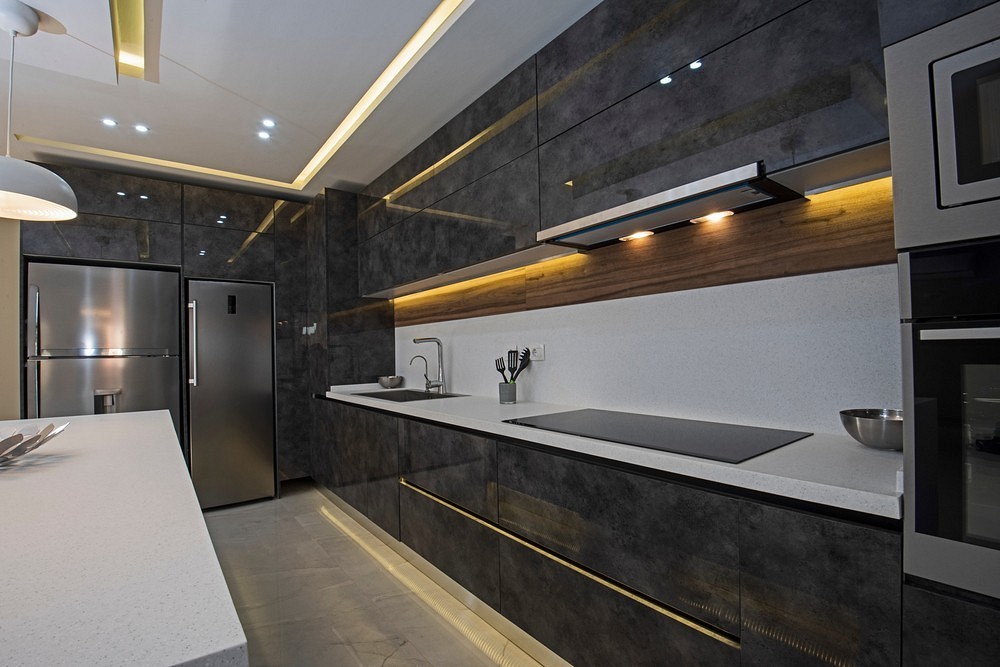
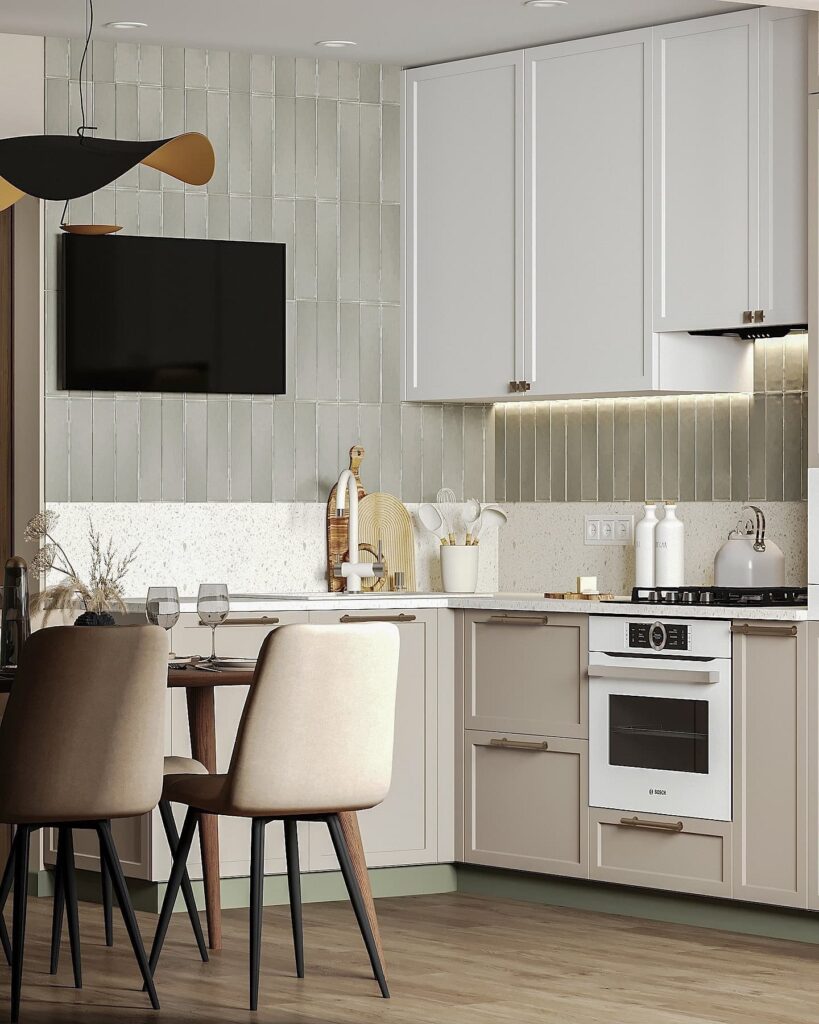
The Best Material for a Kitchen Kickboard
Kickboards for kitchen cabinetry are made from different materials, each with its pros and cons.
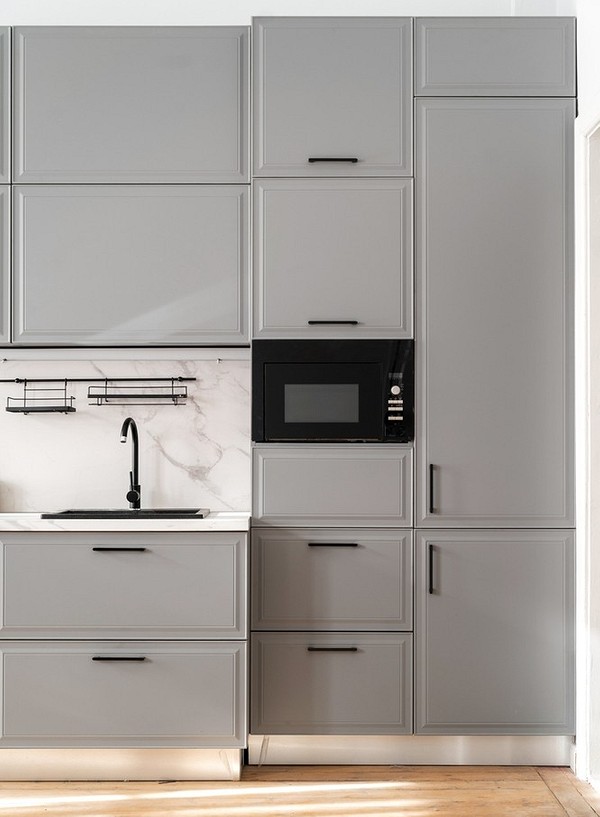
Wood
Wood remains one of the best options for any furniture. It is a natural and noble material that fits well both in classic and minimalist designs. It’s eco-friendly and durable. It’s usually chosen in addition to solid wood cabinetry to maintain consistency and not cheapen the look of the furniture.
The downsides of wood are well-known. First, like all natural materials, it is quite expensive. Second, water, steam, and temperature fluctuations are not the best conditions for this material
. In a humid environment, it can warp, dry out, and even start to rot. To prevent this, choose dense species like oak, cherry, beech, pine, or ash. You can also apply a protective water-repellent finish, which will significantly extend the life of the product.
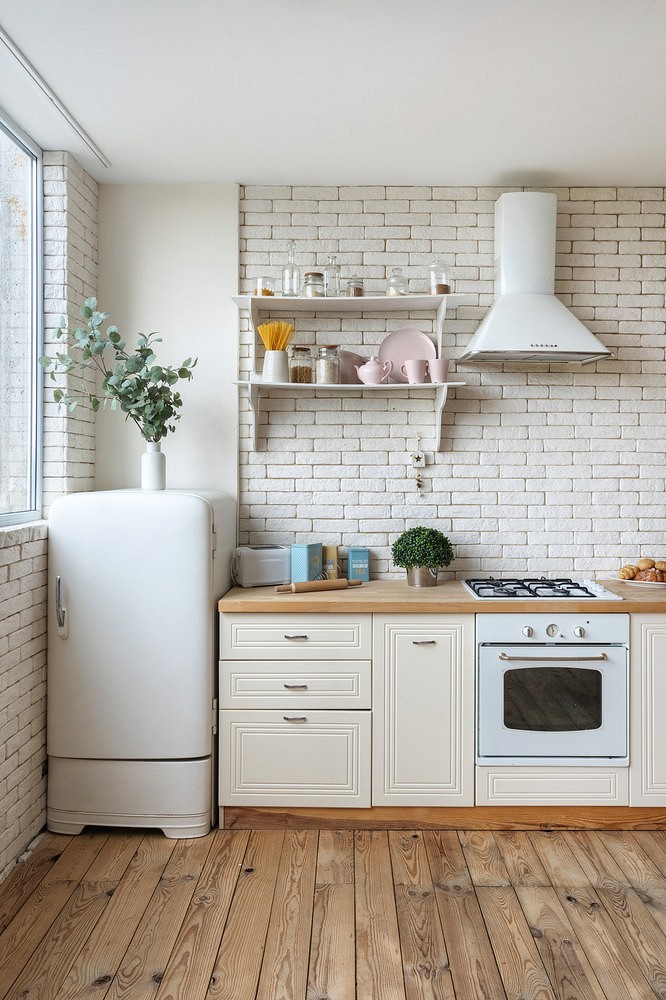
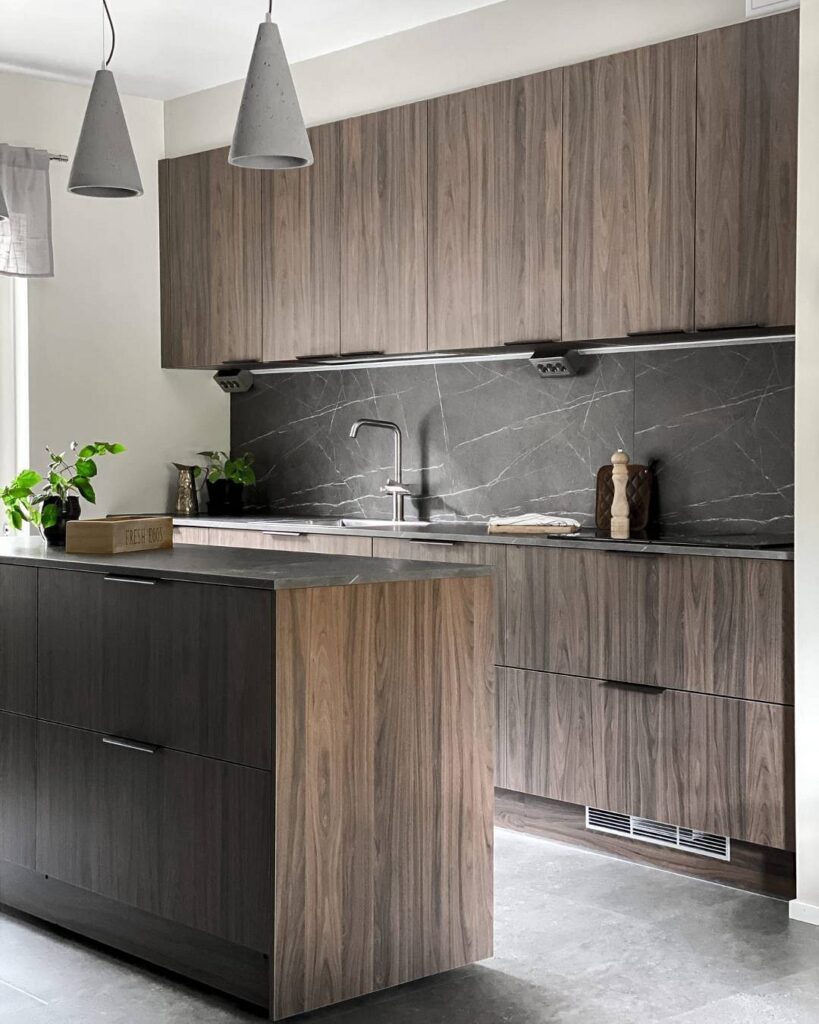

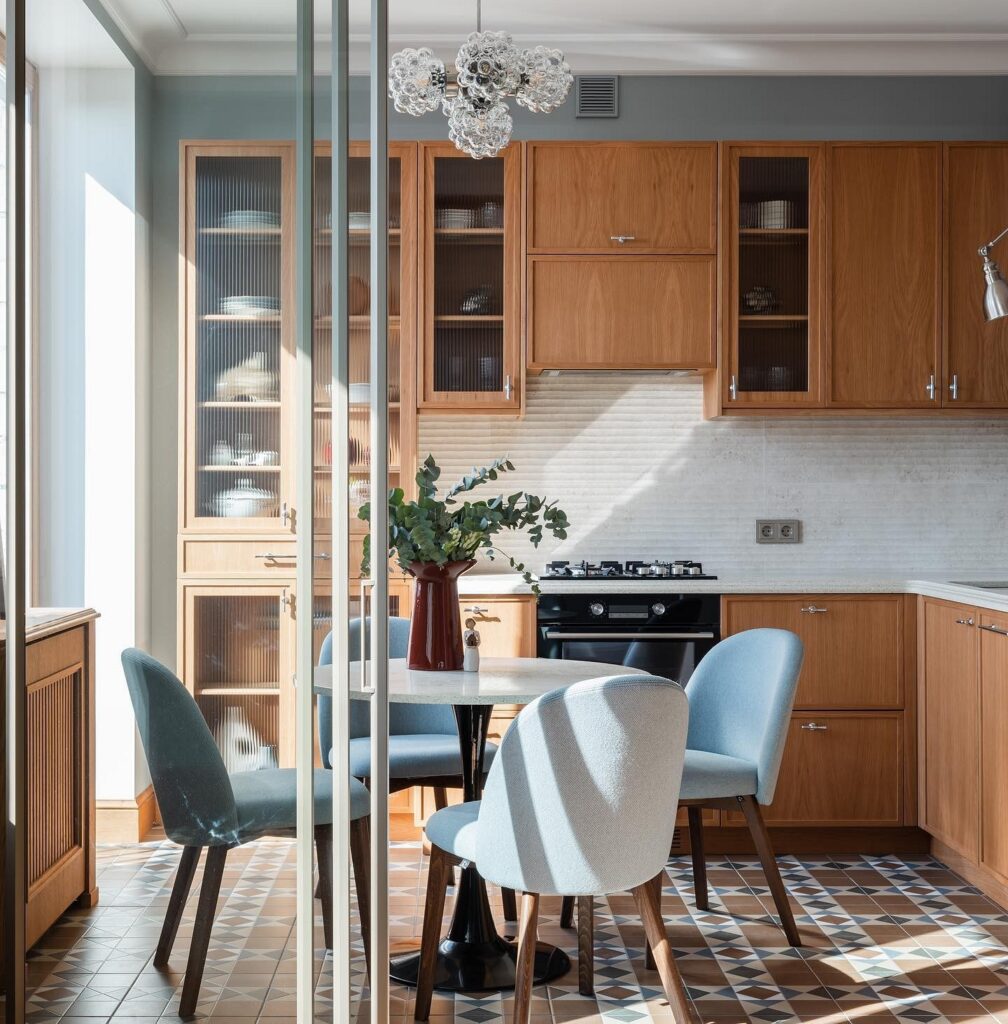
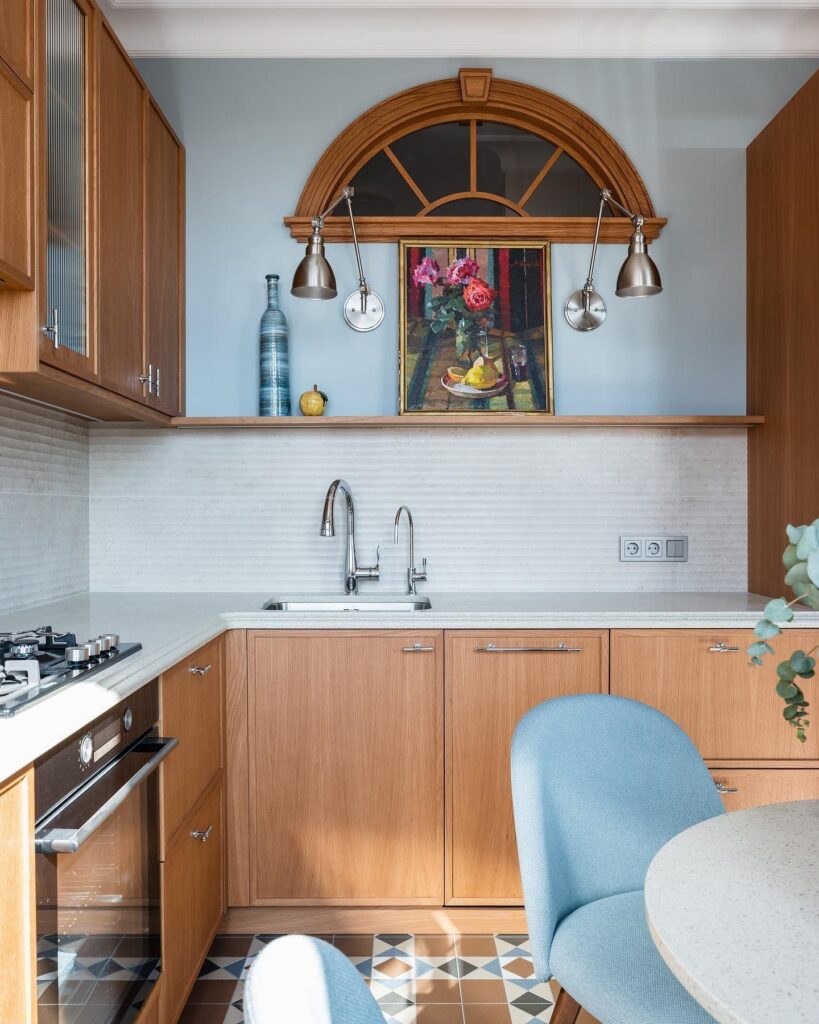
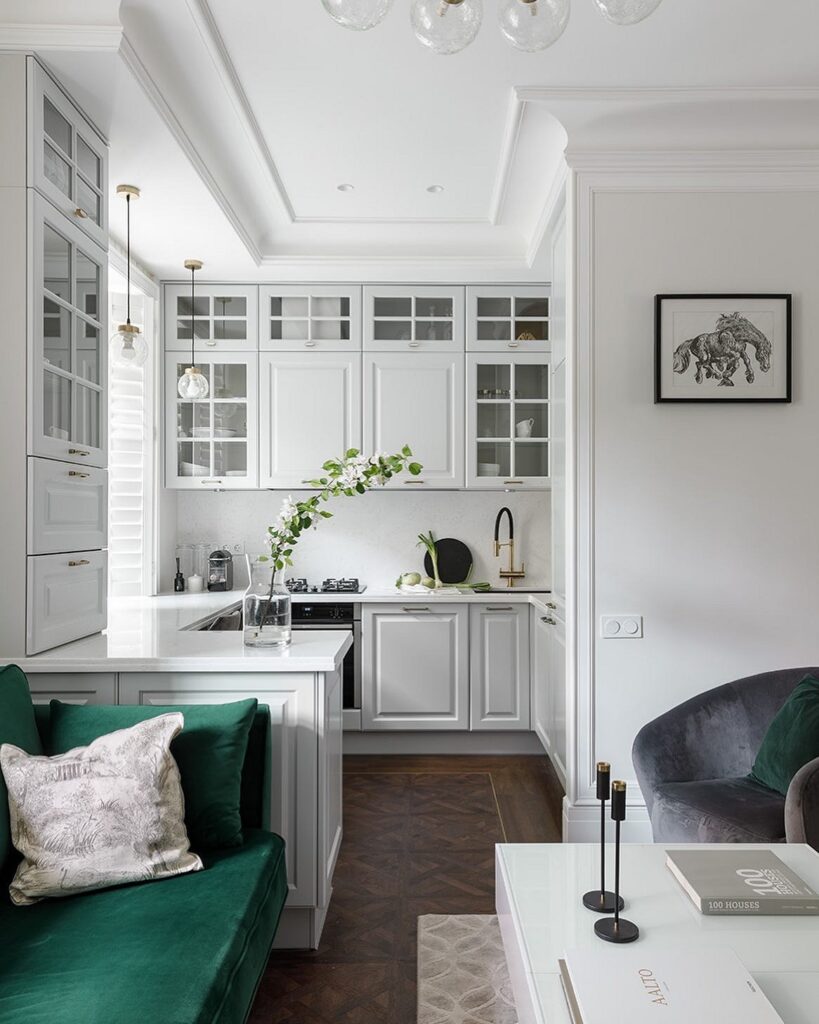
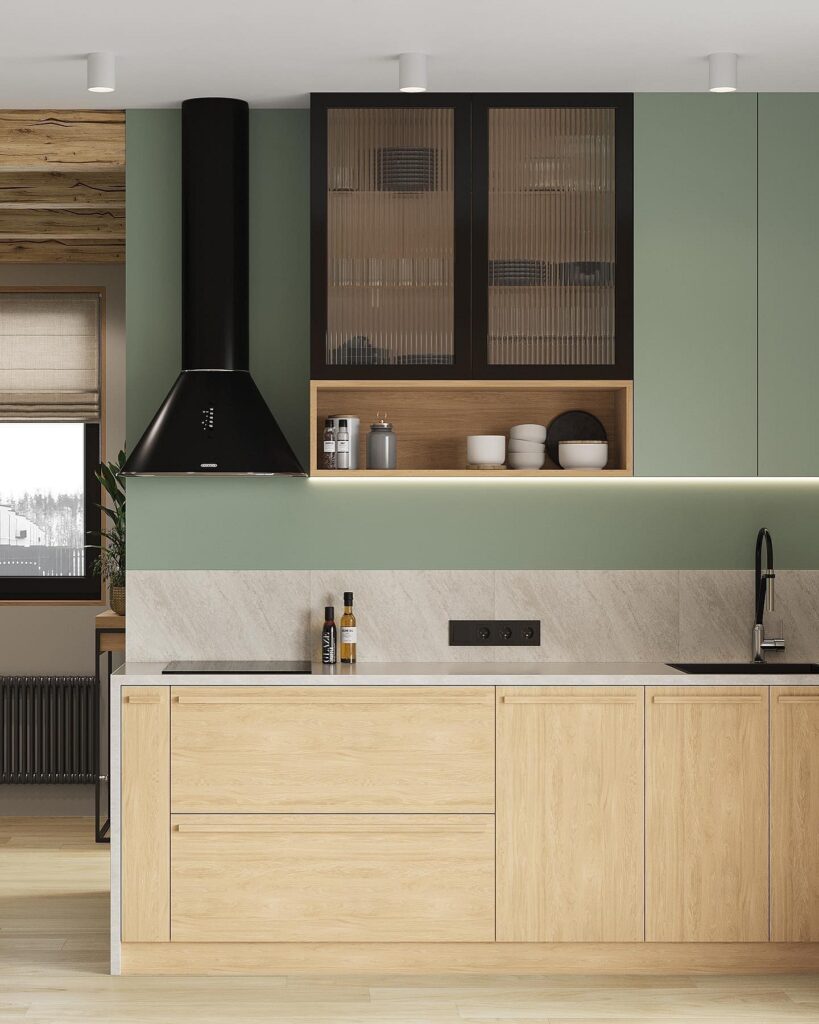
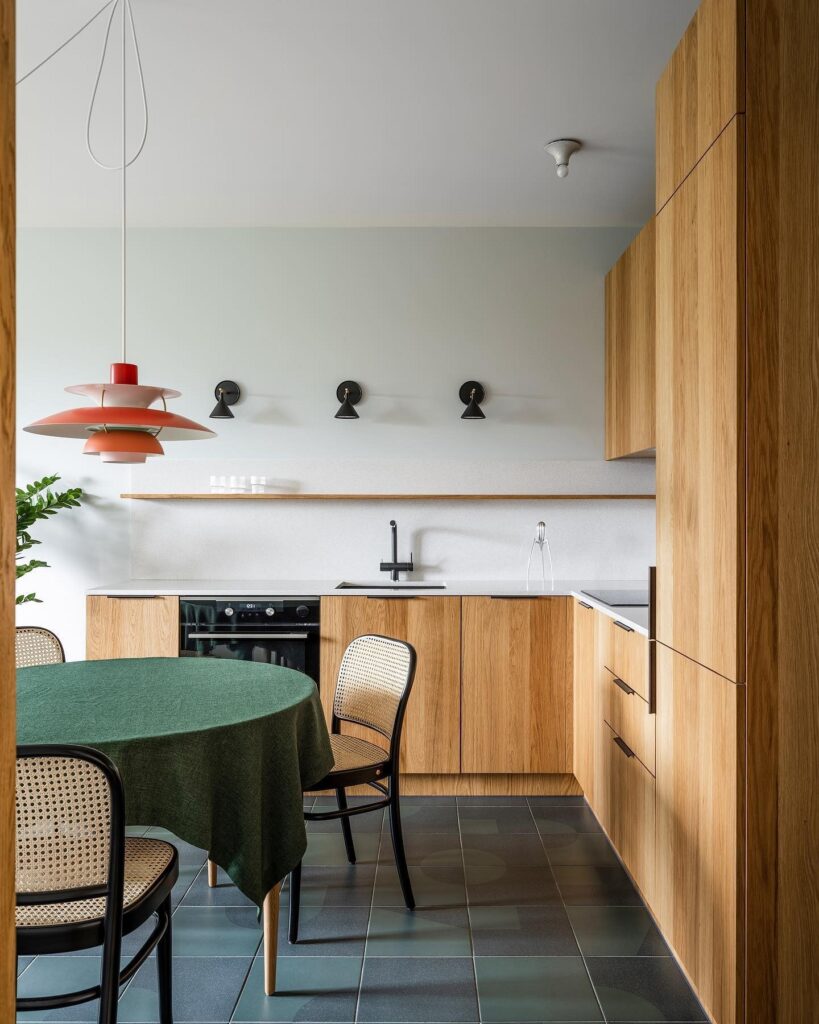
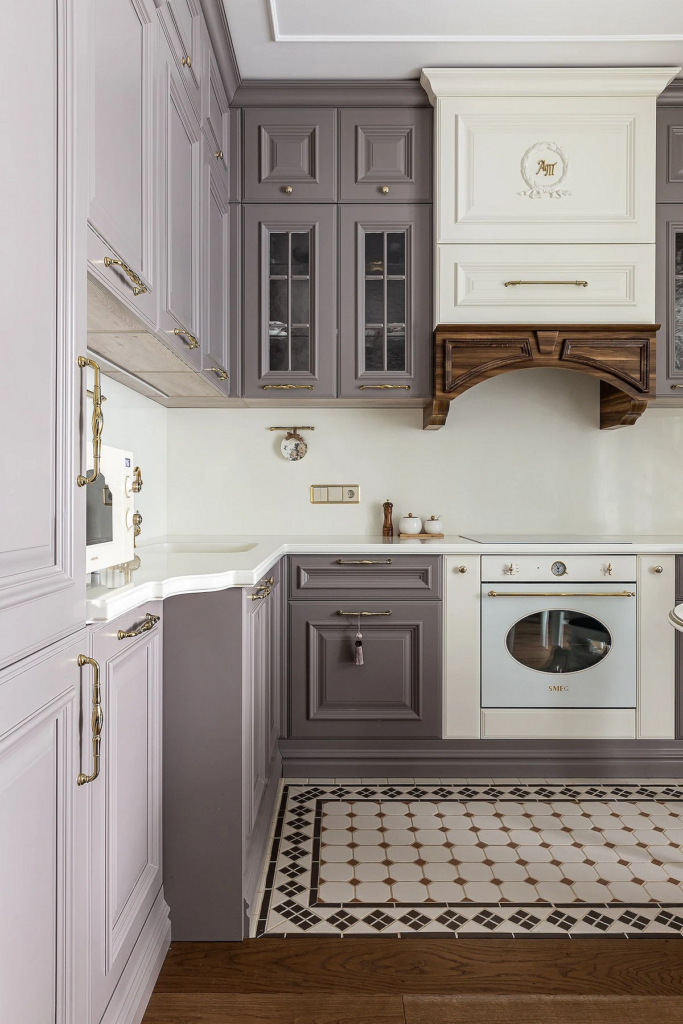
MDF and Particleboard
Often, less expensive alternatives to solid wood like MDF or particleboard are preferred. Besides the price, their main advantage is the wide choice of colors, textures, and shapes. You can find exact imitations of wood or opt for a smooth, monochrome surface. Shades are available in any range, from natural neutrals to pastel or bright colors.
There are also downsides. The lifespan of strips made from MDF or particleboard is short—about 3-5 years, assuming the kitchen is not overly humid. Direct contact with water and frequent temperature changes are detrimental to these materials. MDF is more durable and long-lasting compared to particleboard, so the latter is often used as a temporary option for a few years of renovation.
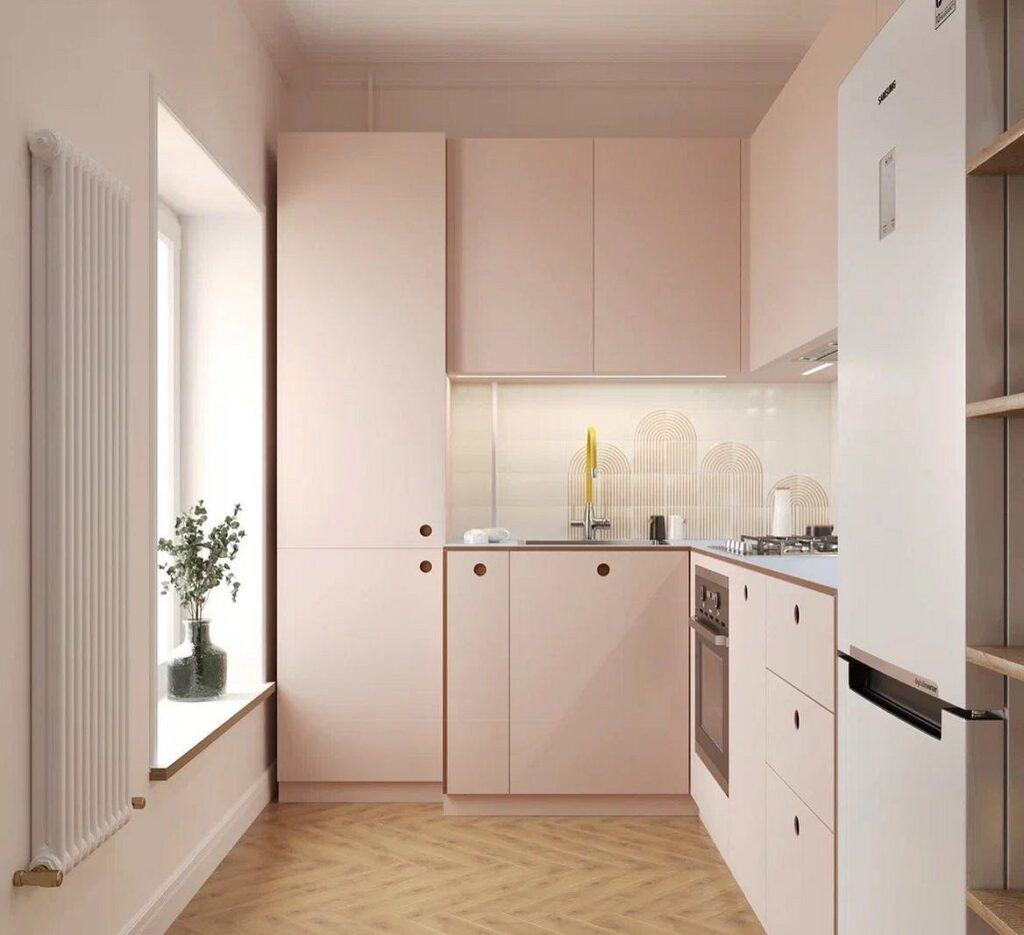
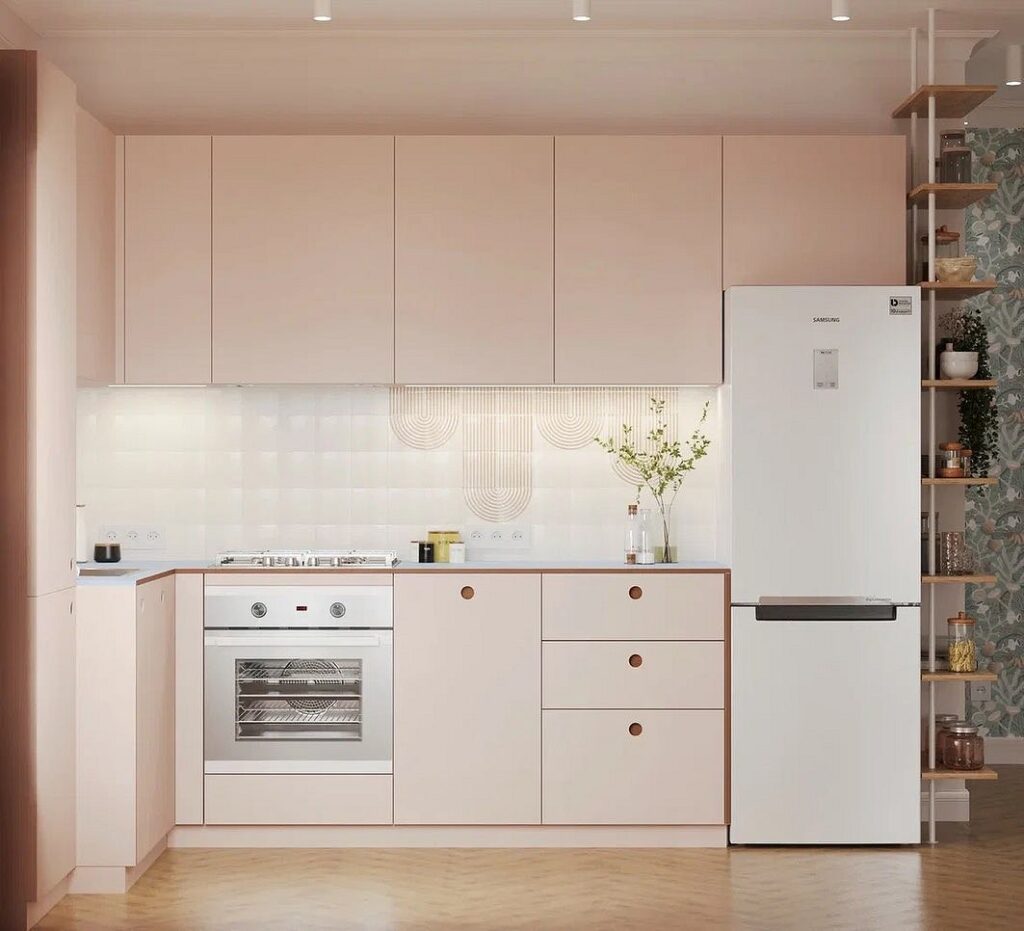
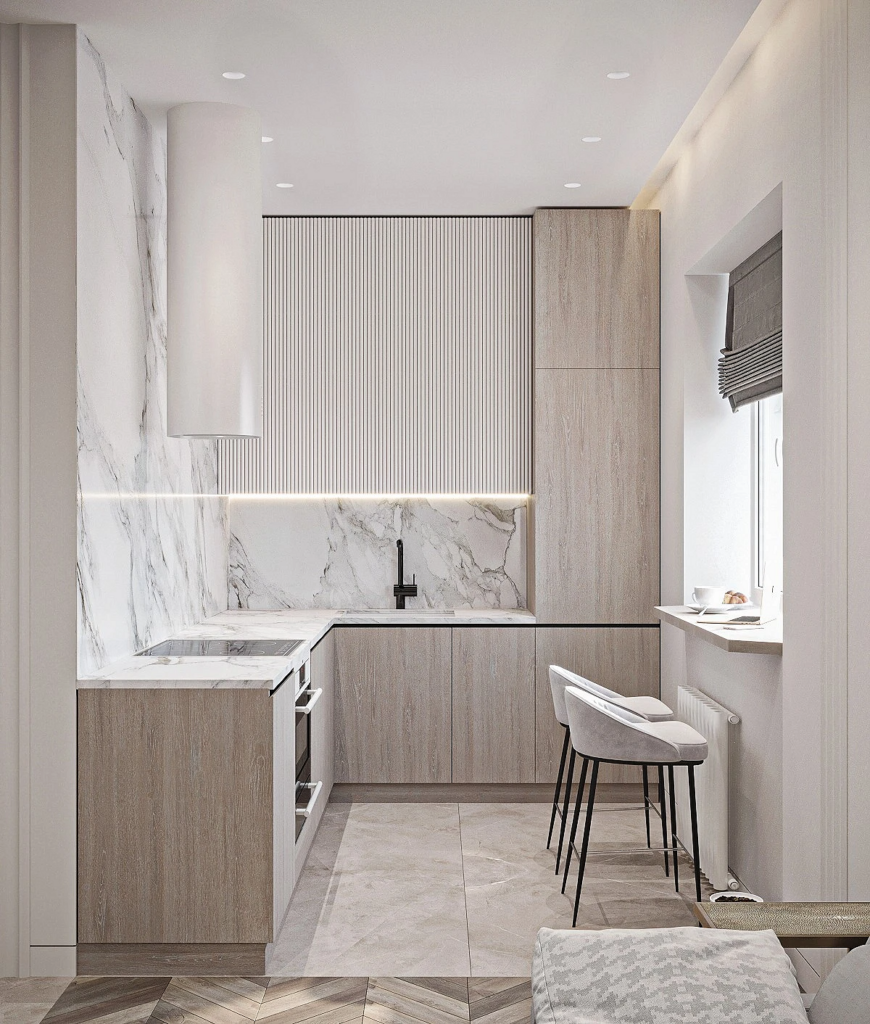

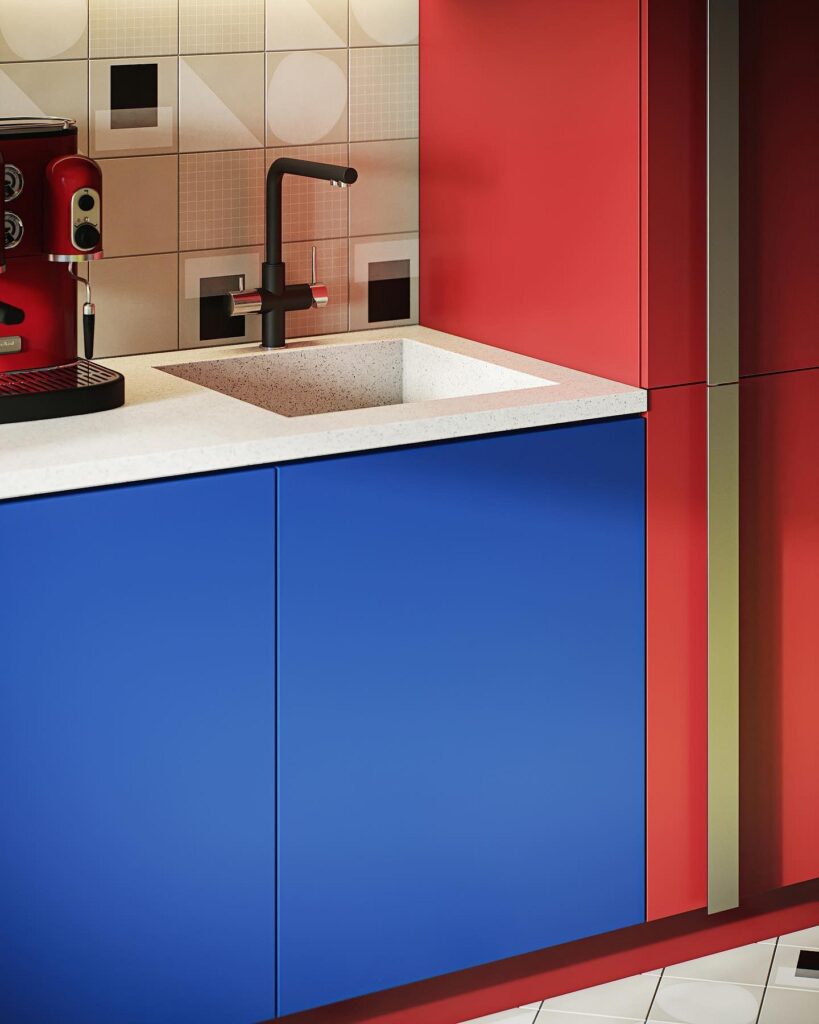
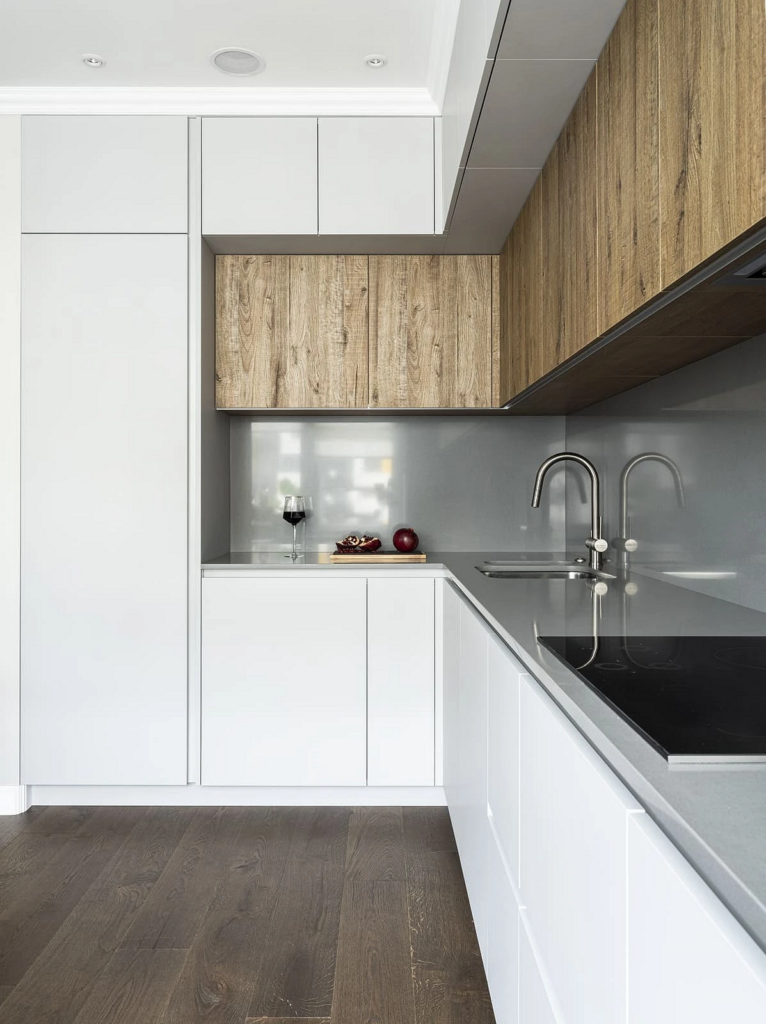
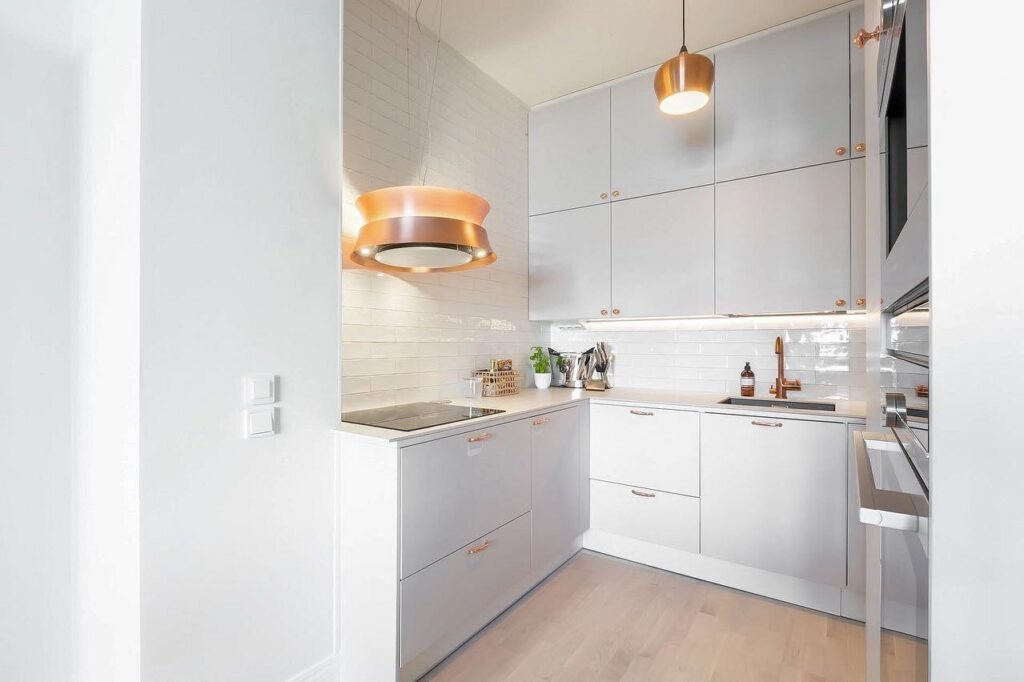
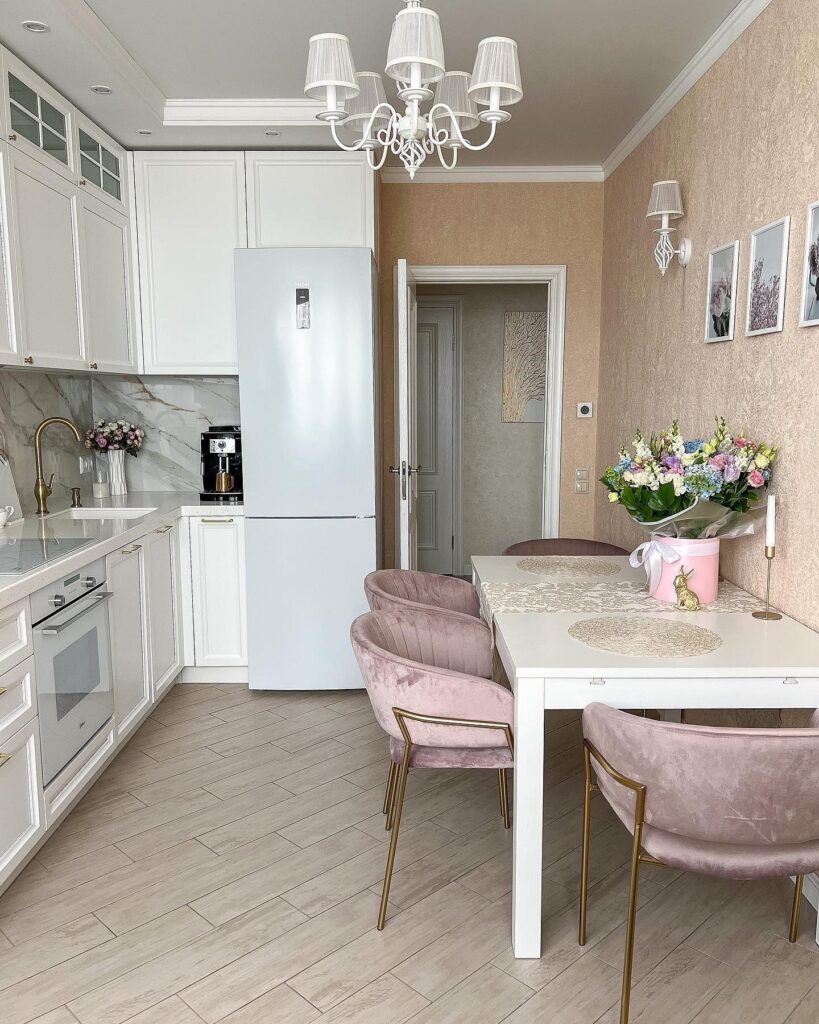
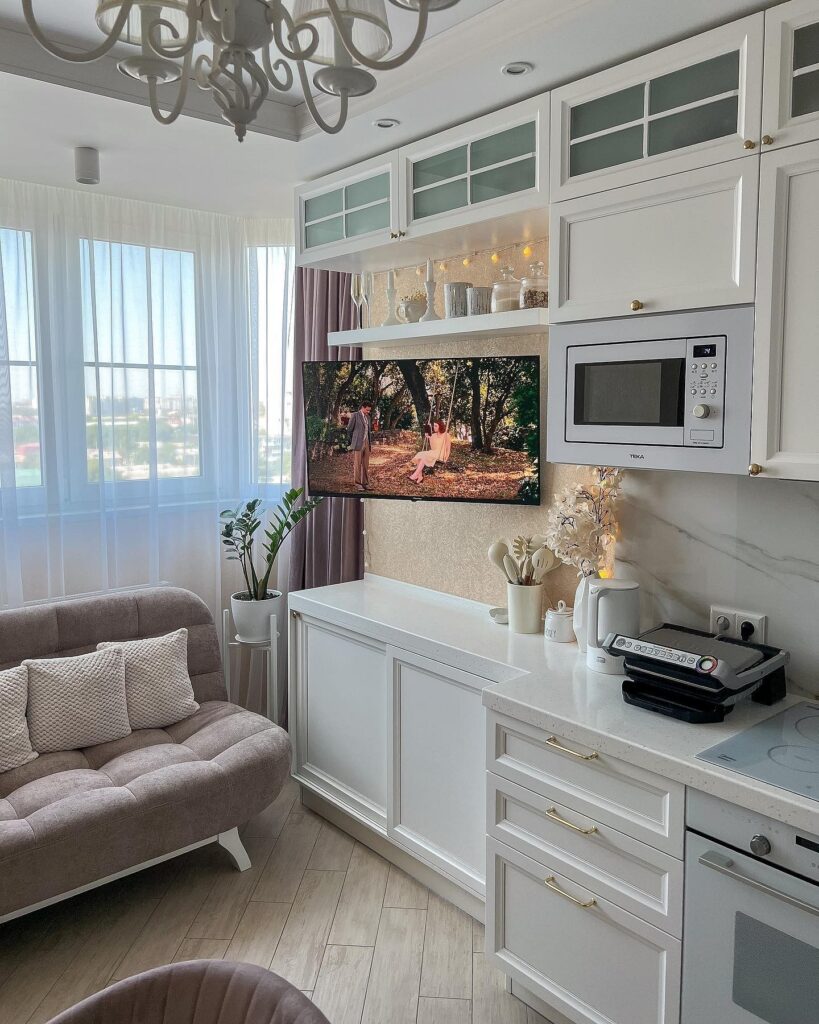

Metal
Metal, often aluminum, is quite expensive but very durable, strong, and resistant to various damages. Such a strip can last for decades, will not become a breeding ground for mold, and does not deform in conditions of high humidity. Additionally, aluminum is a lightweight metal that is easy to install. It is also resistant to sunlight. Manufacturers offer models ranging from 4 to 6 inches.
The main drawback is its lack of flexibility: for example, it is not suitable for radial cabinetry with smooth rounded edges.
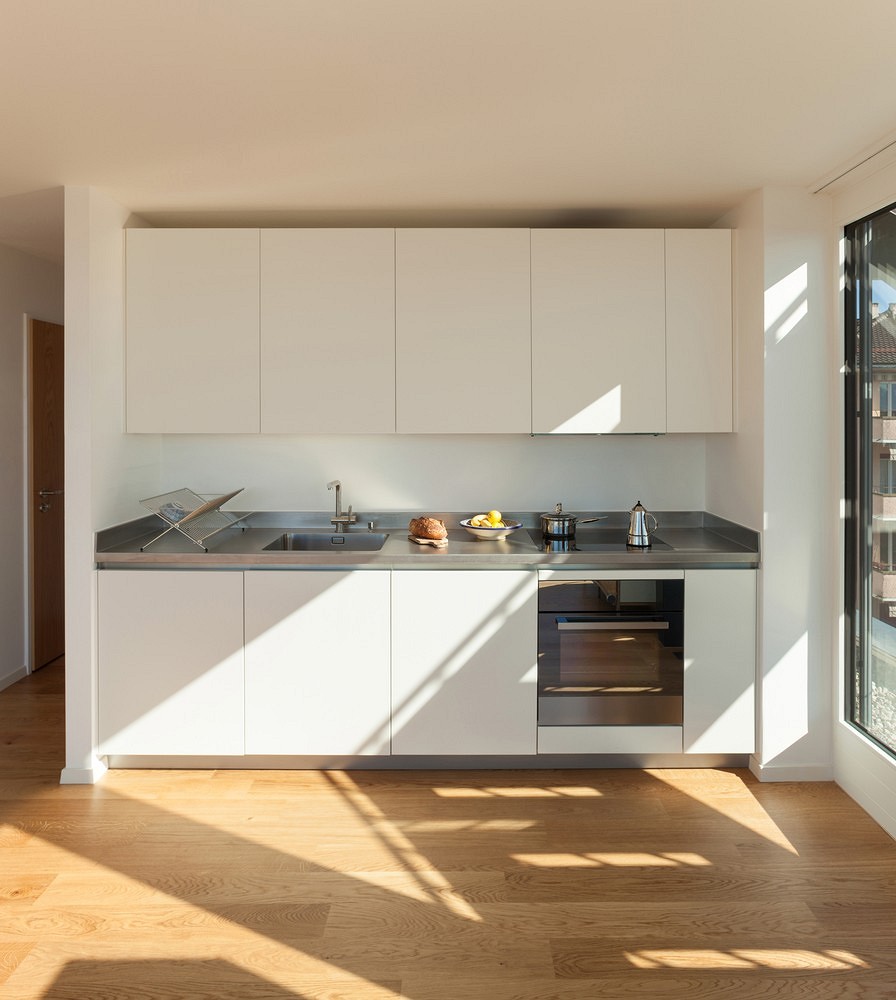
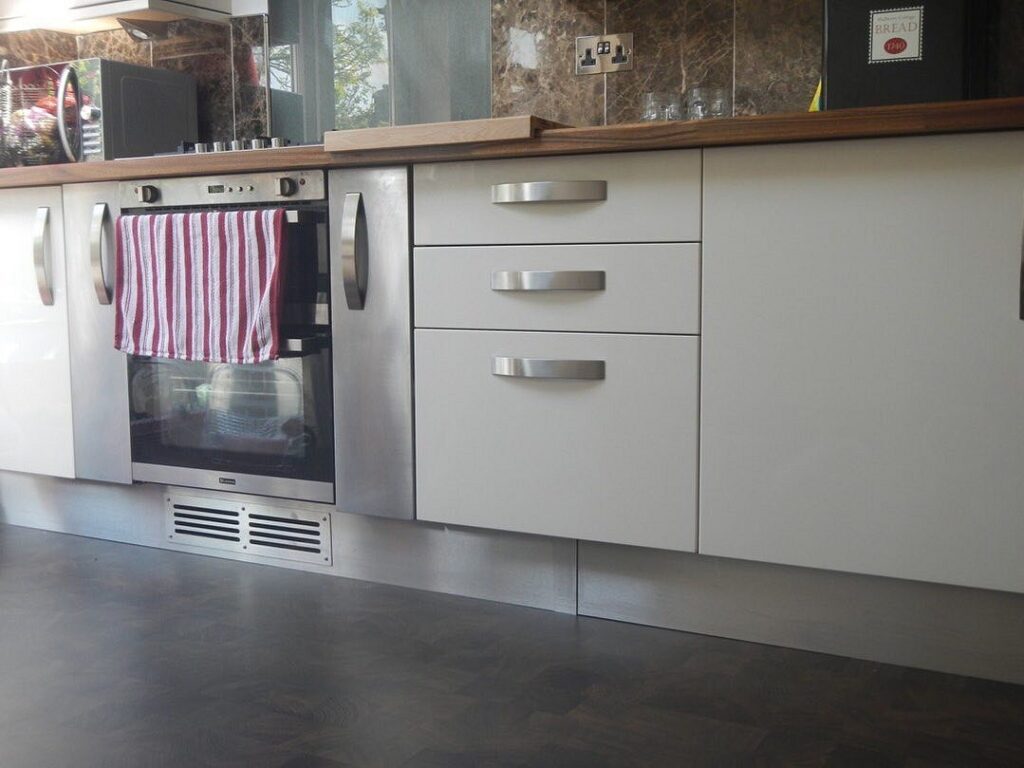
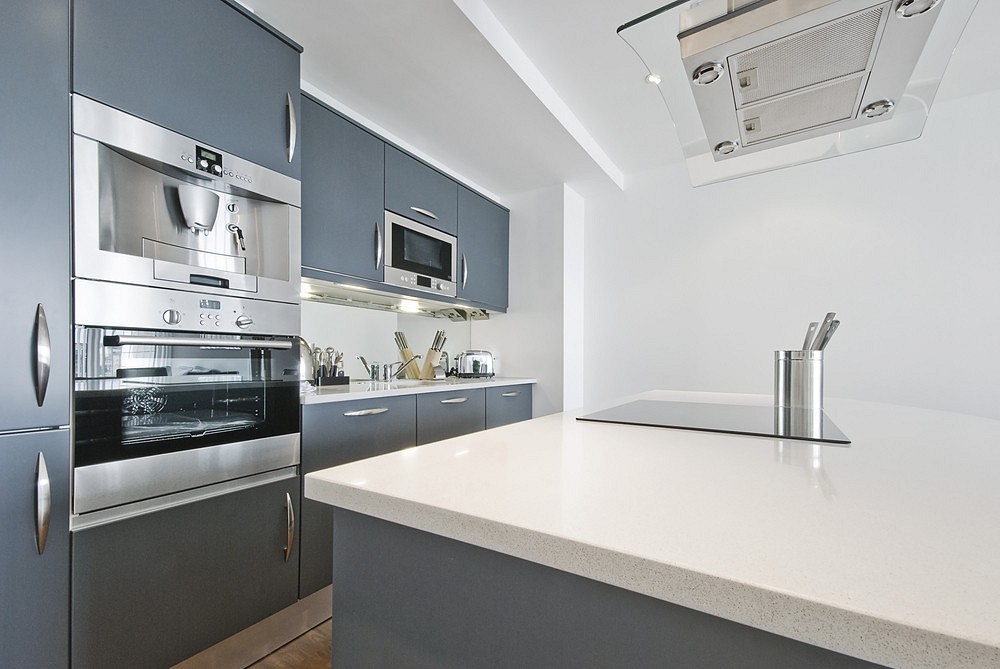
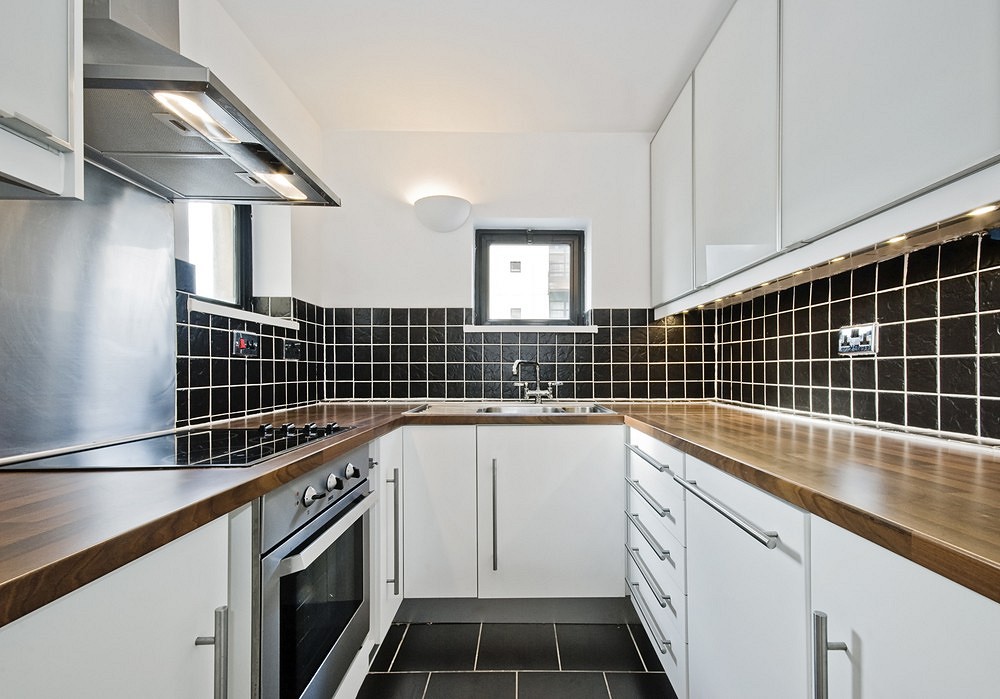
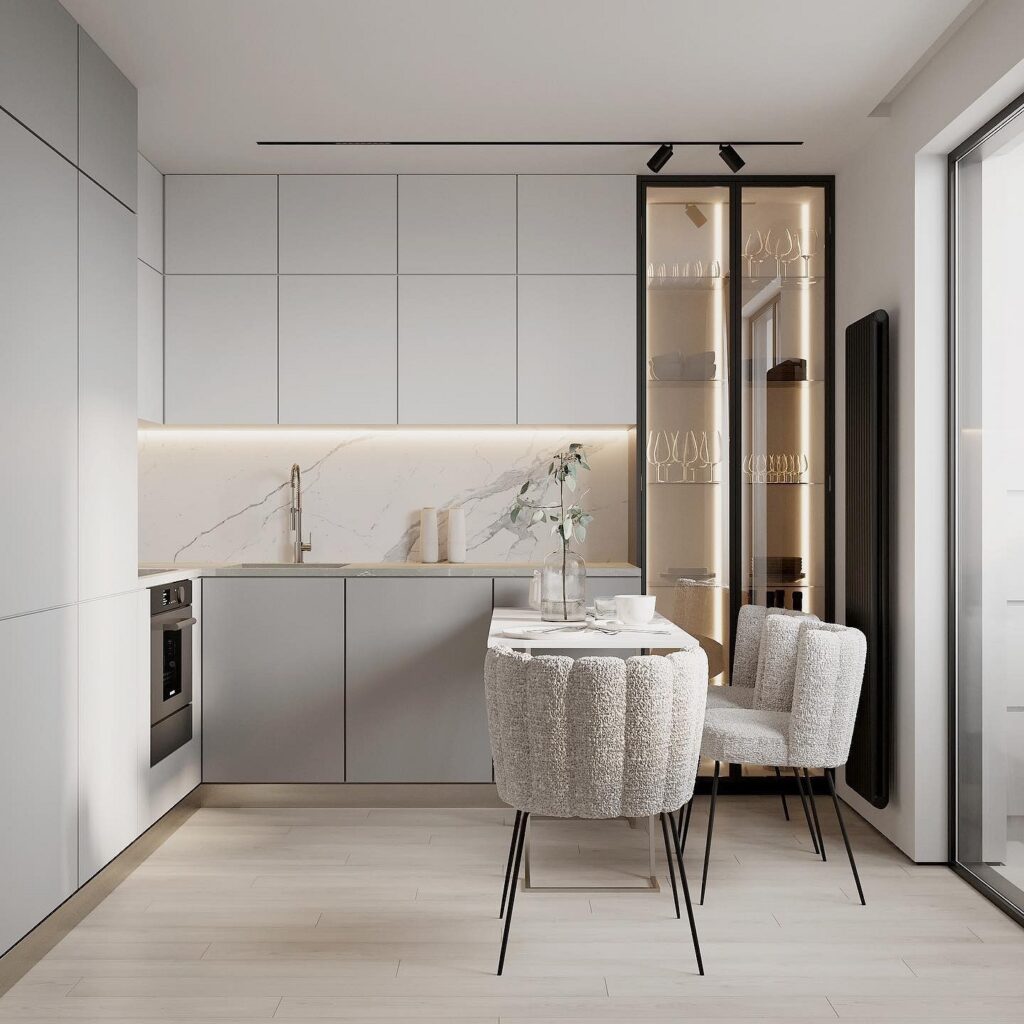
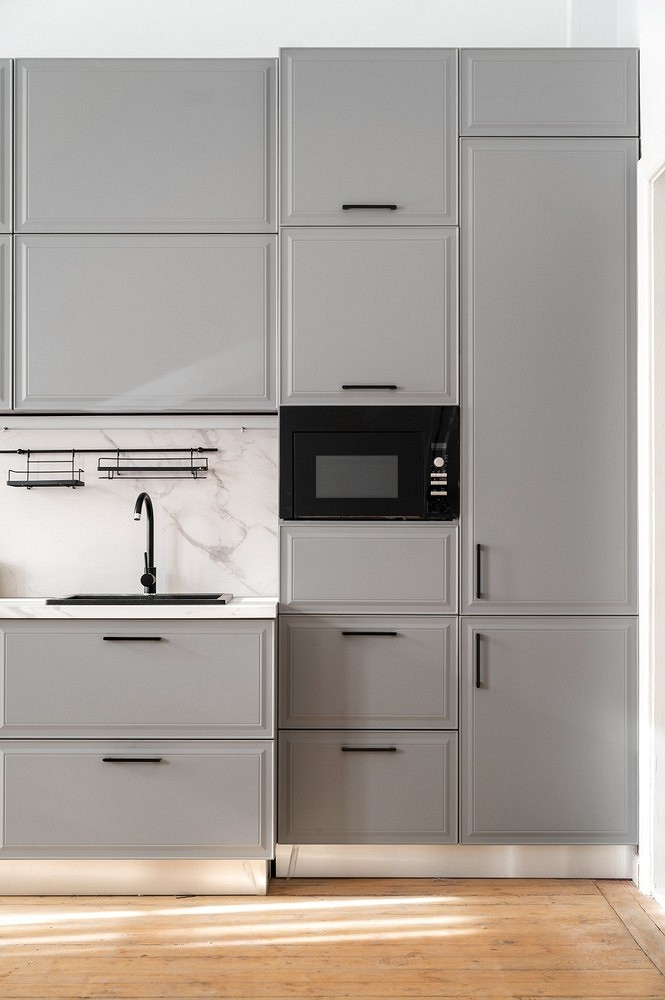
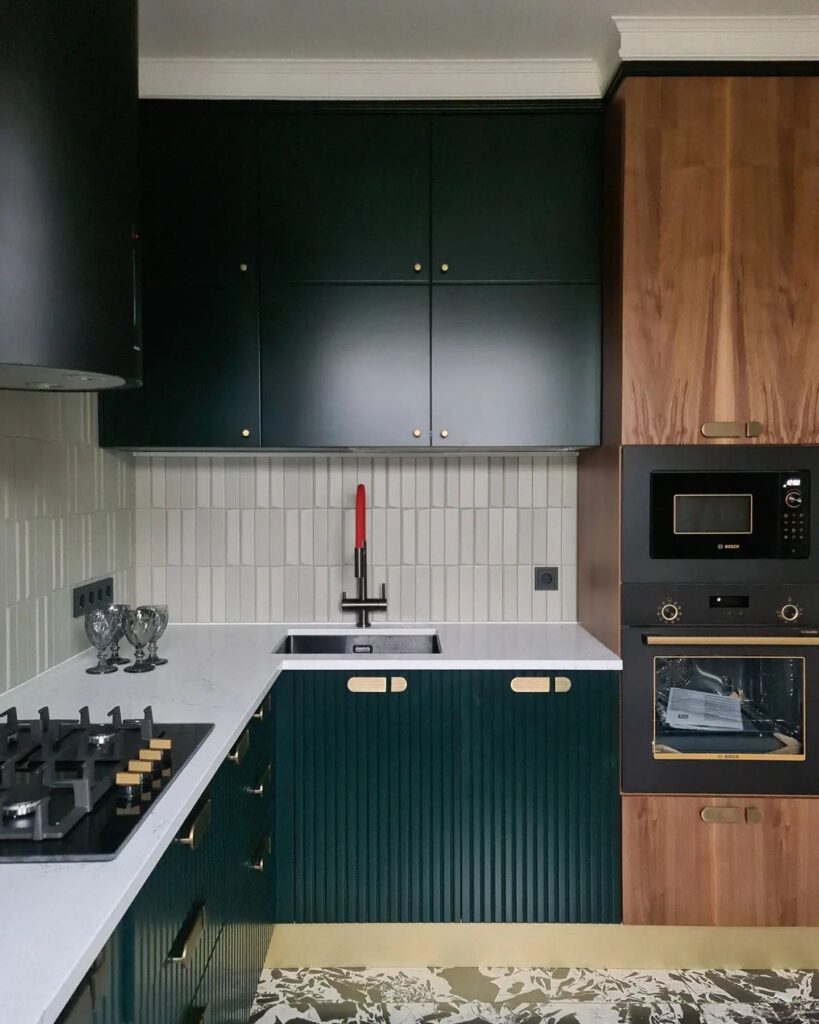
Plastic
A plastic kickboard looks good in modern interiors. However, it’s almost never chosen for classic, Art Deco, country, or eco-style designs, as these styles require natural materials of a certain quality.
Still, plastic is not a bad option for edging cabinetry. The material is inexpensive, with a wide range of design options: from color to shape and decorative elements. It’s suitable for corner kitchens. It resists moisture, temperature changes, and steam. Moreover, it’s easy to clean, and you can use almost any household cleaner on it. There are few downsides: limited durability, and its synthetic origin (plastic is safe for humans, just not suitable for those who prioritize natural materials).
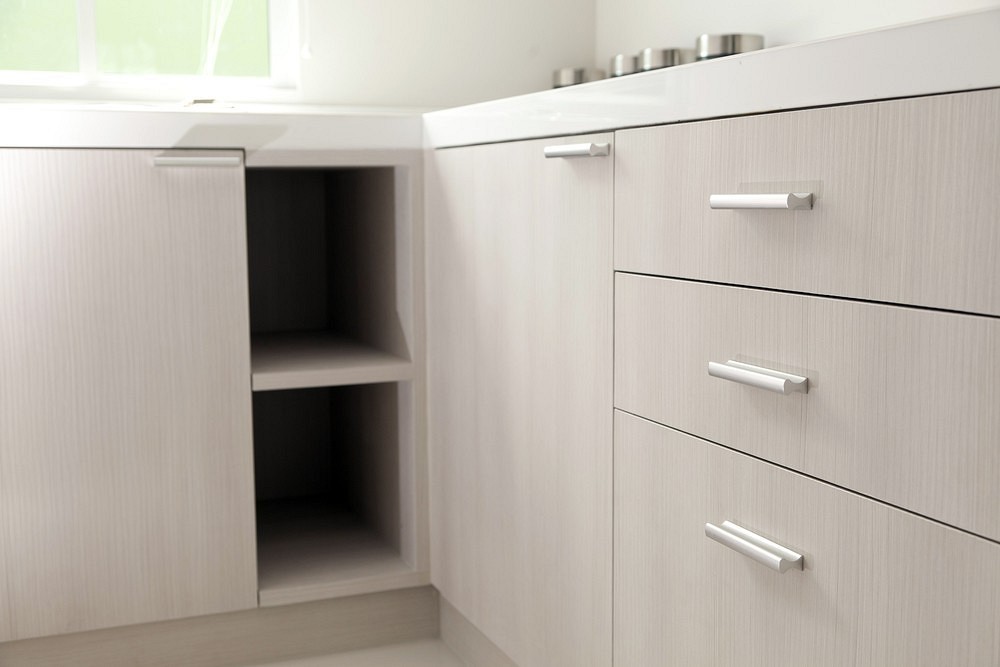

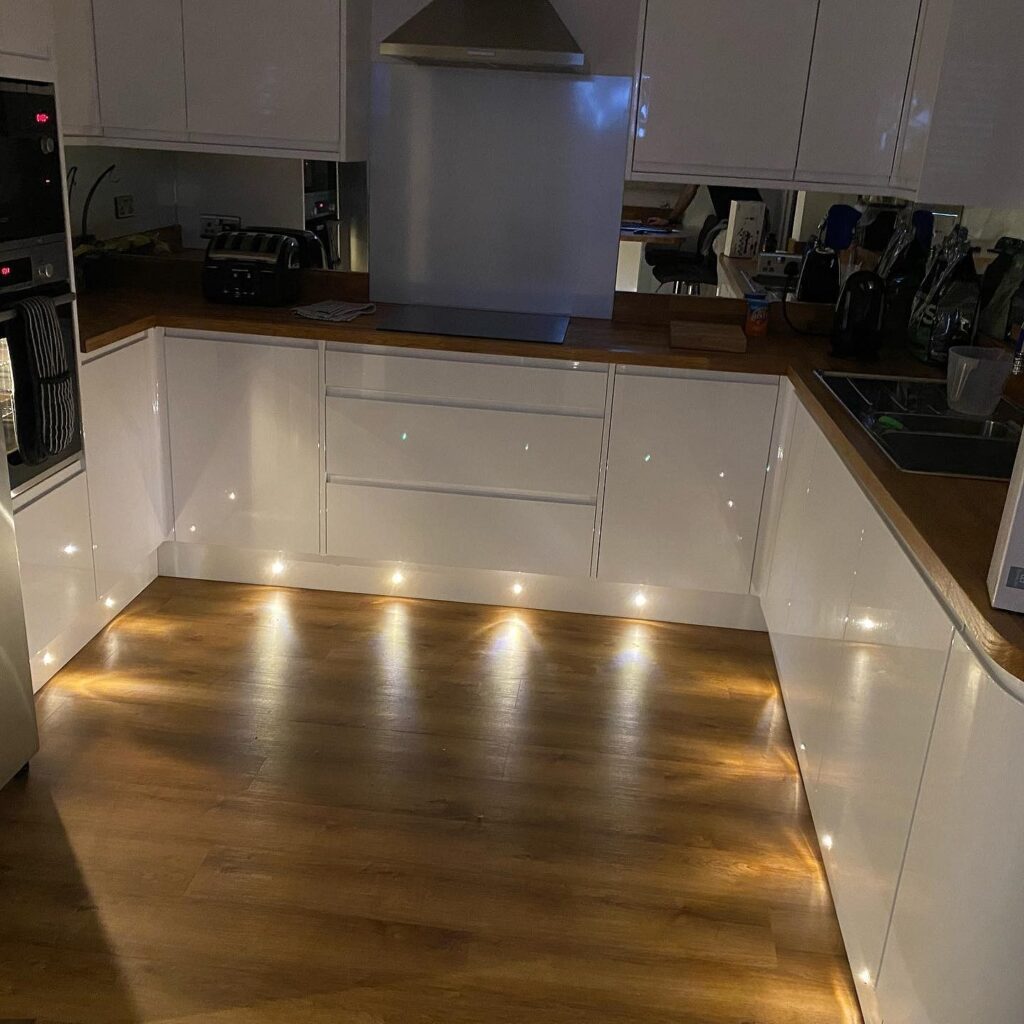
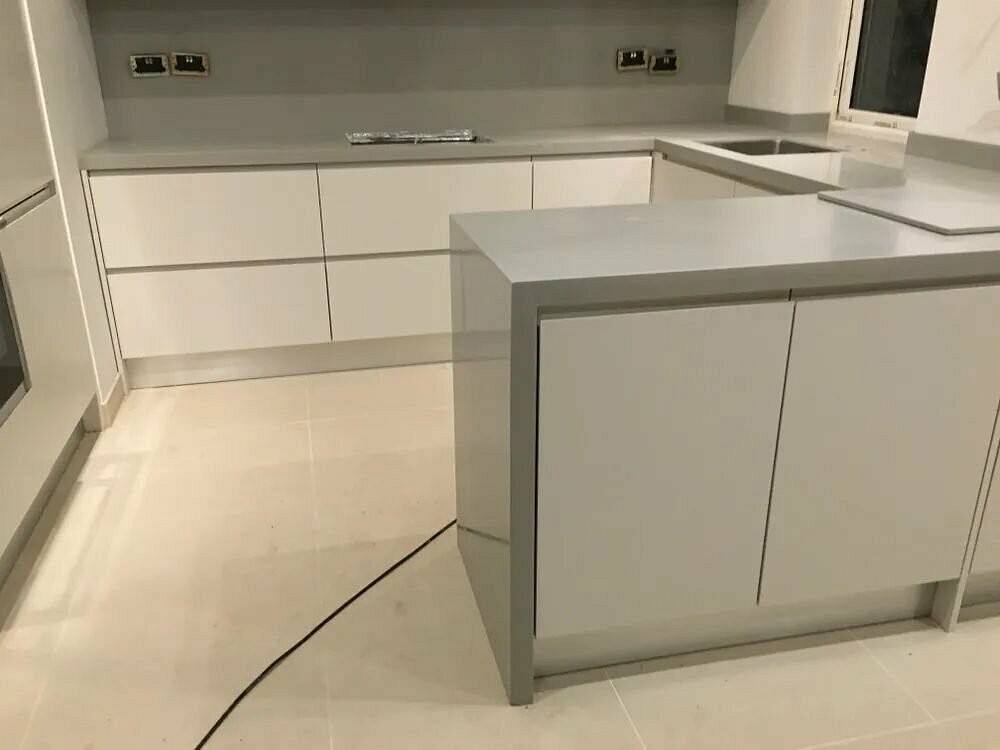
Choosing the Right Design
It might seem that the design of such a minor interior detail doesn’t matter much—what’s important is that it’s durable and suitable for the cooking area. However, this small strip at the bottom can either transform or, conversely, spoil the entire kitchen interior.
Color
The shade of the kickboard is chosen just as the color of the baseboard or door frame is. Matching the cabinetry— a traditional solution that is relevant for any style. On a small kitchen, this is almost the only option, as it doesn’t break the continuity of the scene or create unnecessary emphasis on the boundaries of surfaces. The only exception is dark facades with a light kickboard in the same tone as the finishing. This technique creates a floating effect, especially if supplemented with lighting.
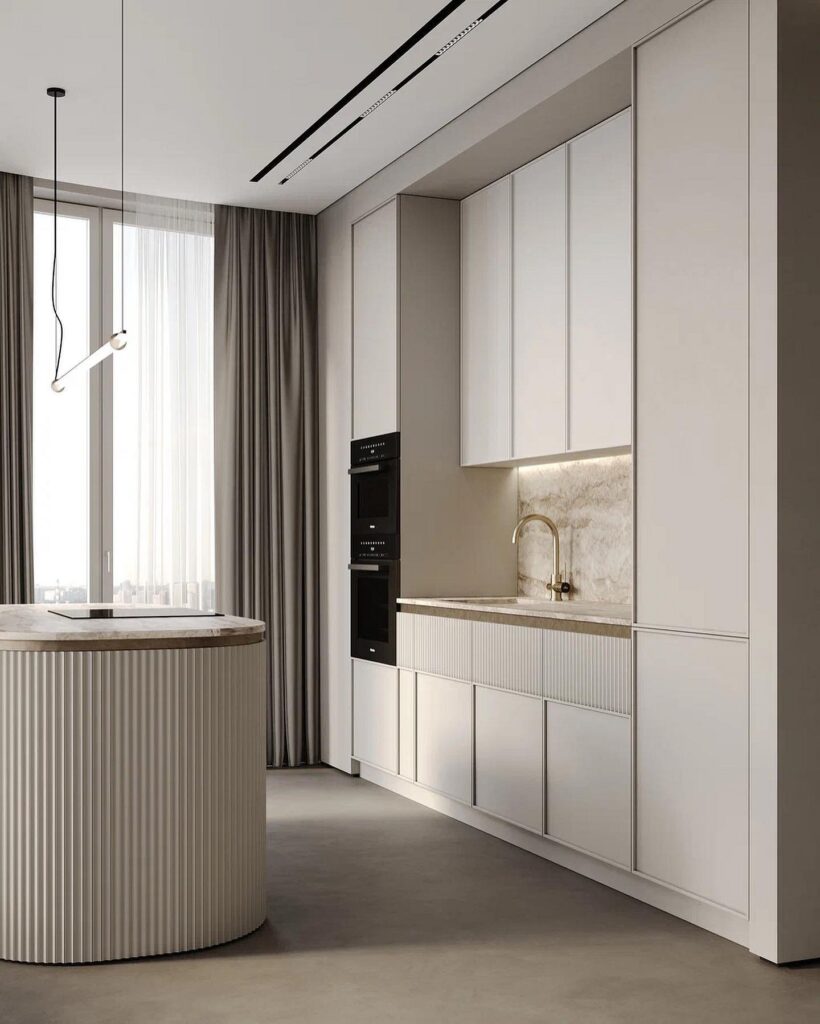
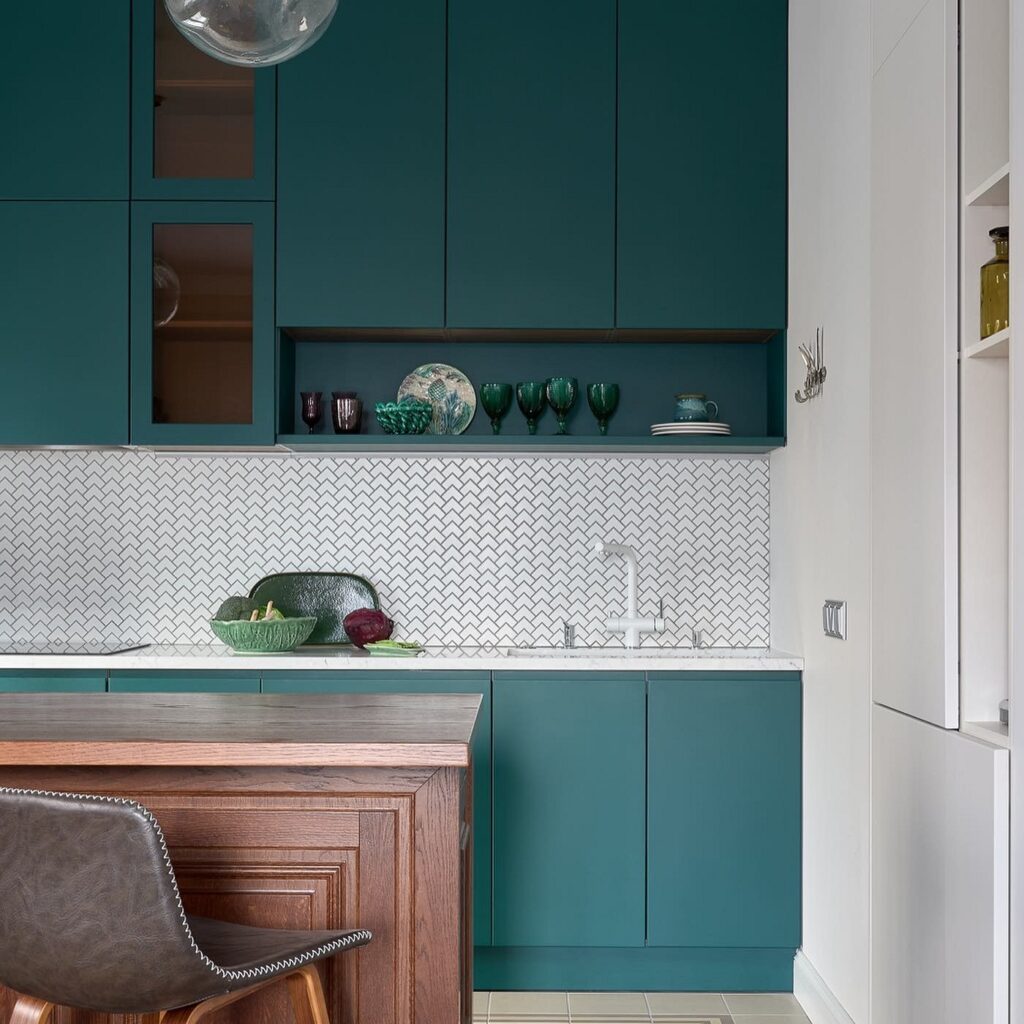
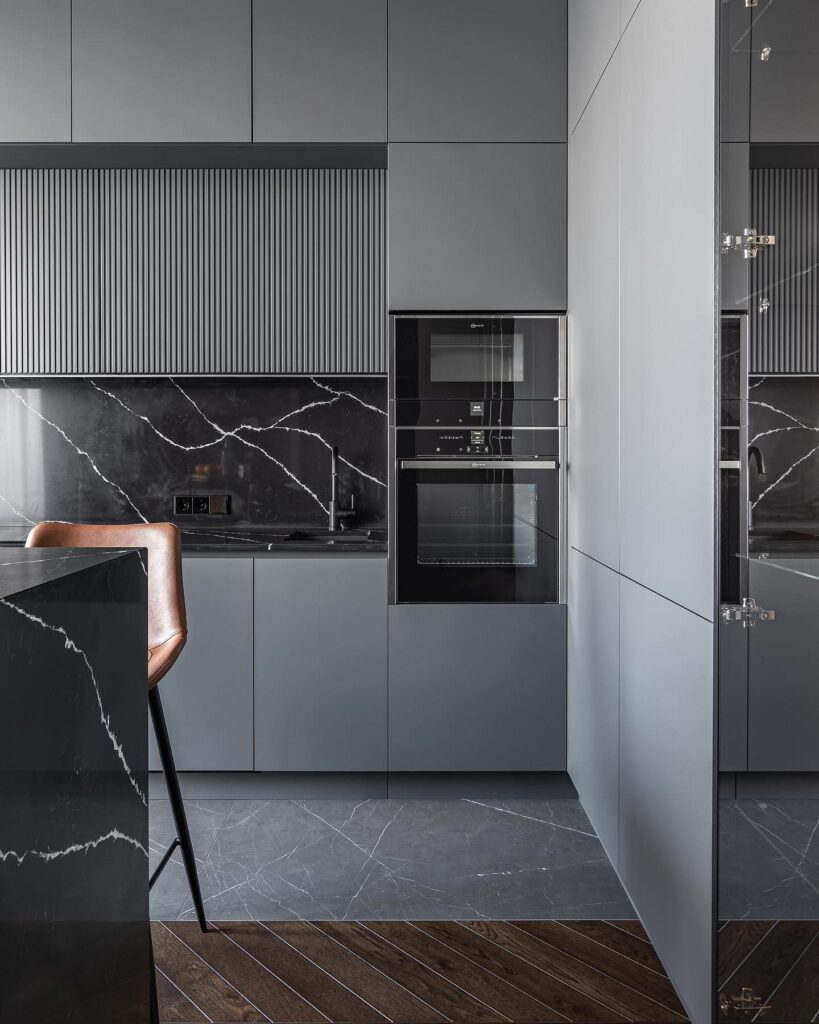
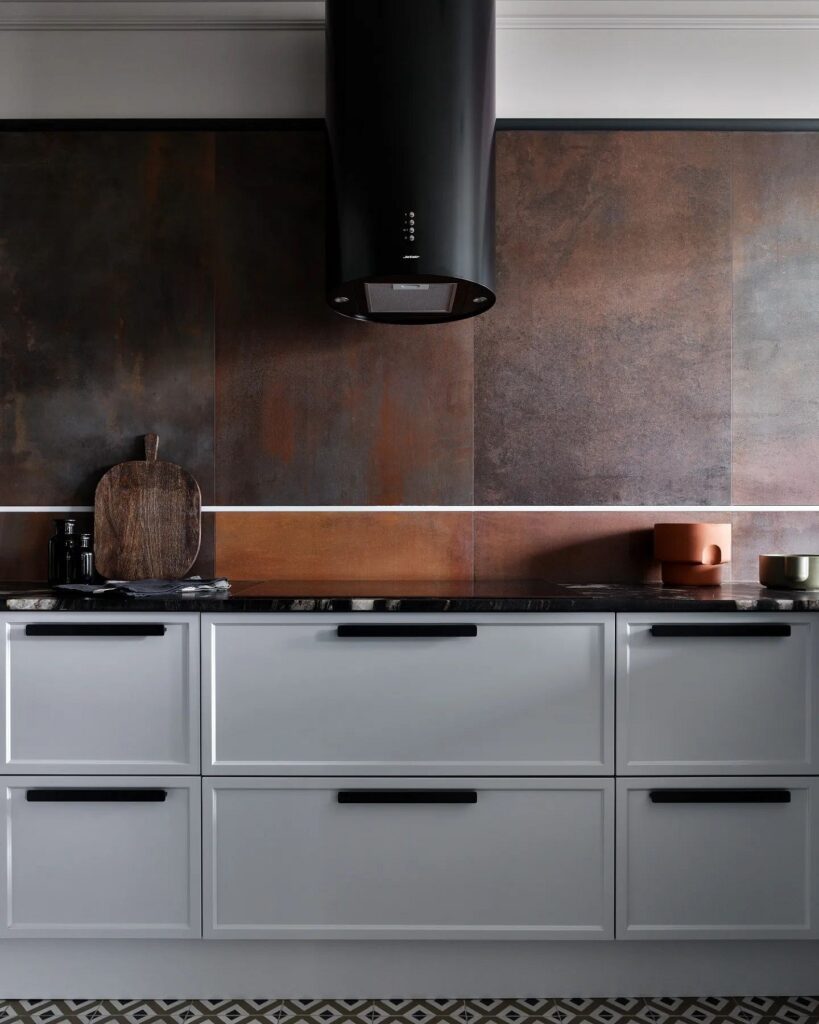
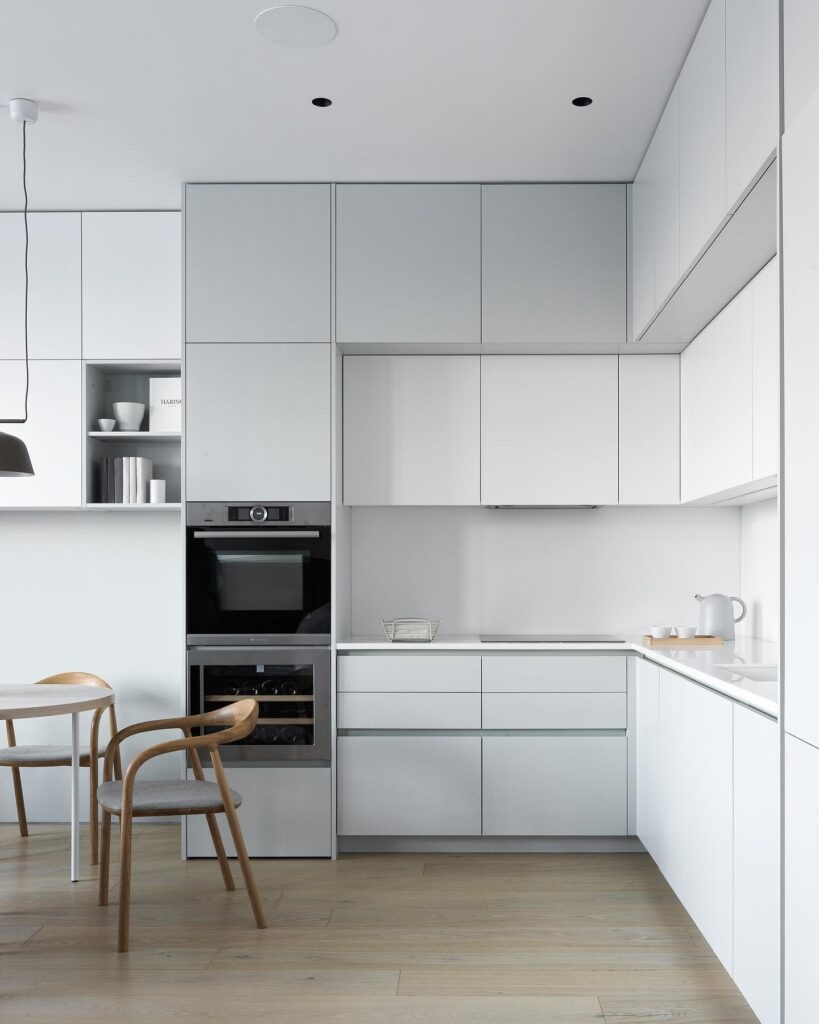
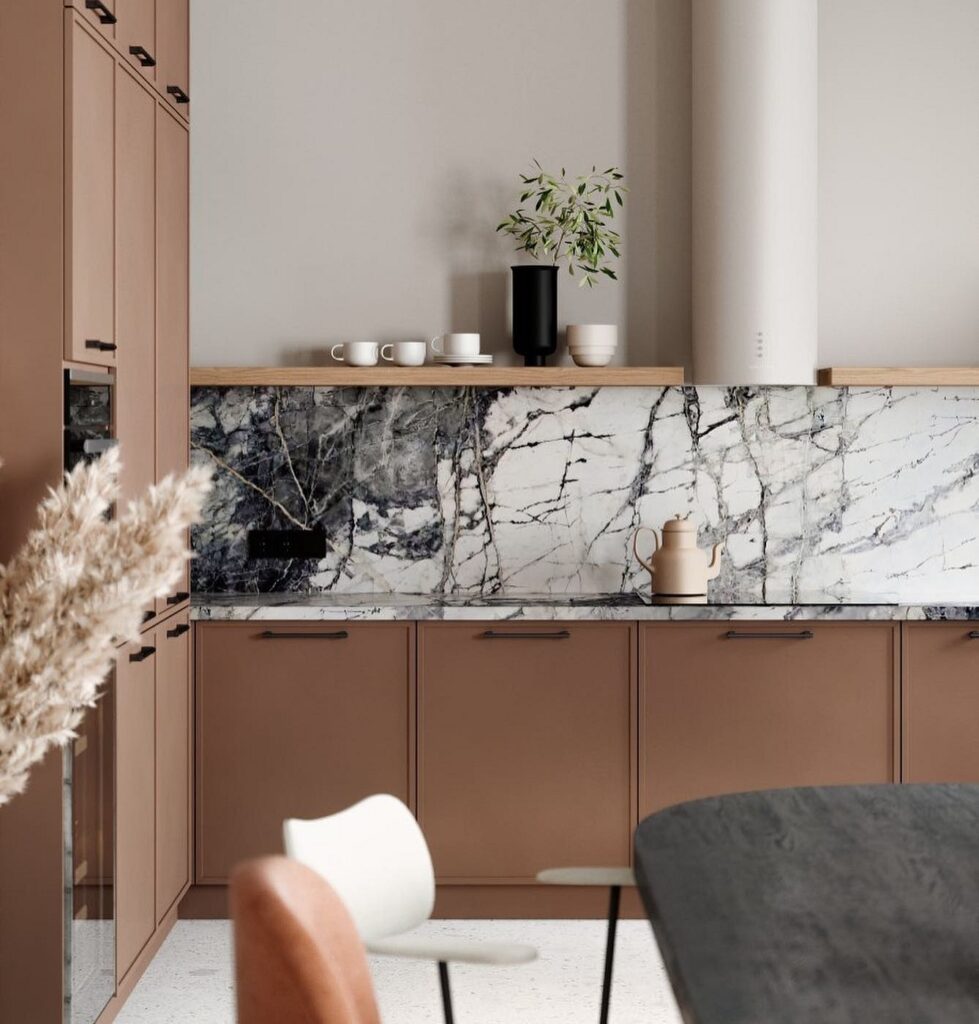

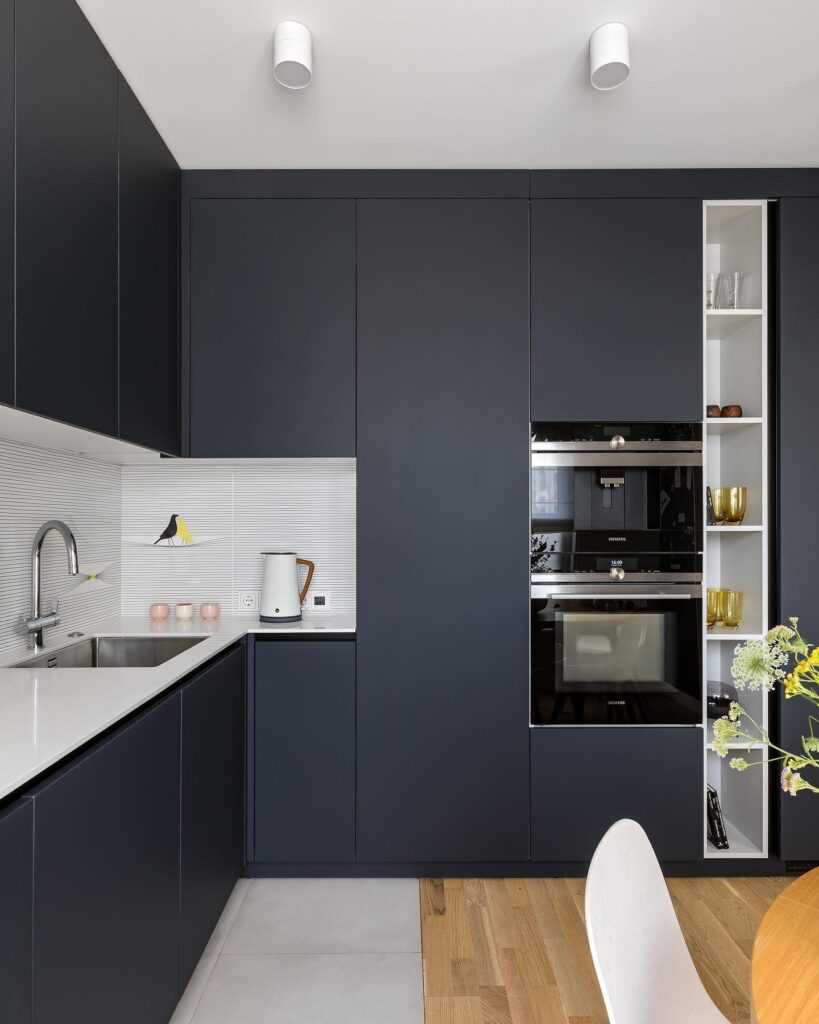
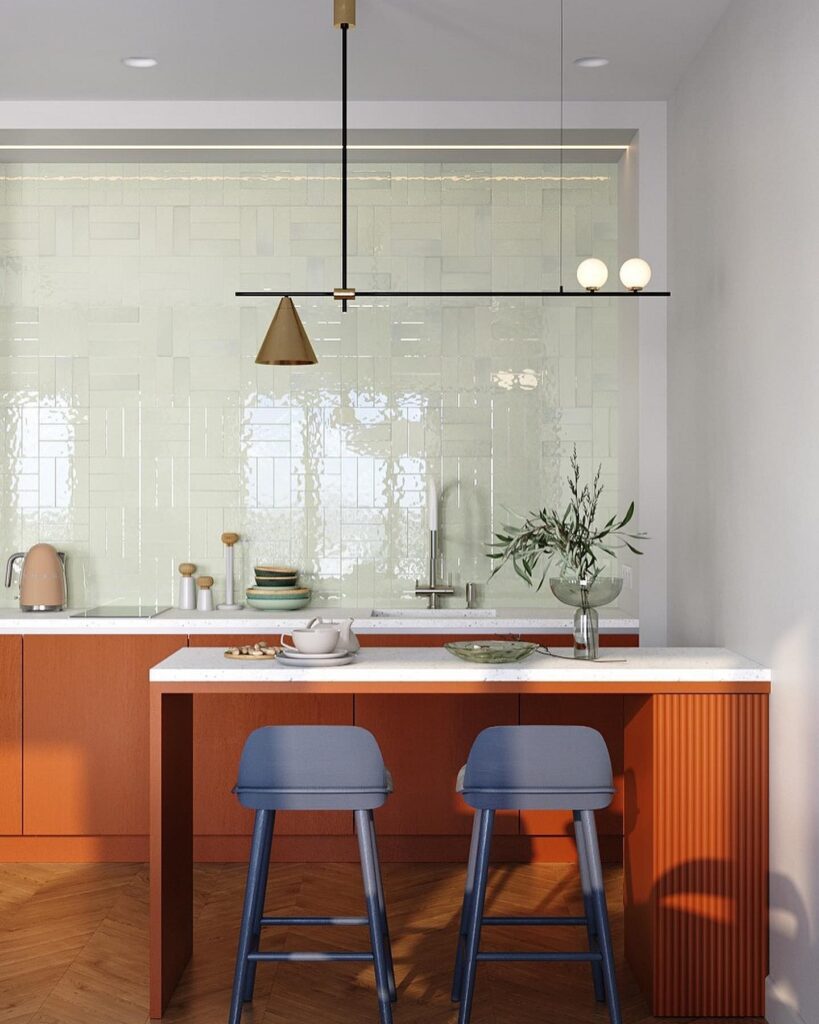
Otherwise, a contrasting color is a bold choice that immediately attracts attention. To make the furniture look stylish, it’s better to choose a basic shade like black, brown, or anthracite for the lower strip. Or you could opt for a darker tone than the facades: for example, blue and light blue, emerald and mint, terracotta and peach, etc. It is especially striking when the color of the strip is repeated in other elements of the cabinetry: the countertop, fixtures, backsplash, and cabinet edging. This evenly distributes the contrasting shade and creates a rhythm in the kitchen interior.
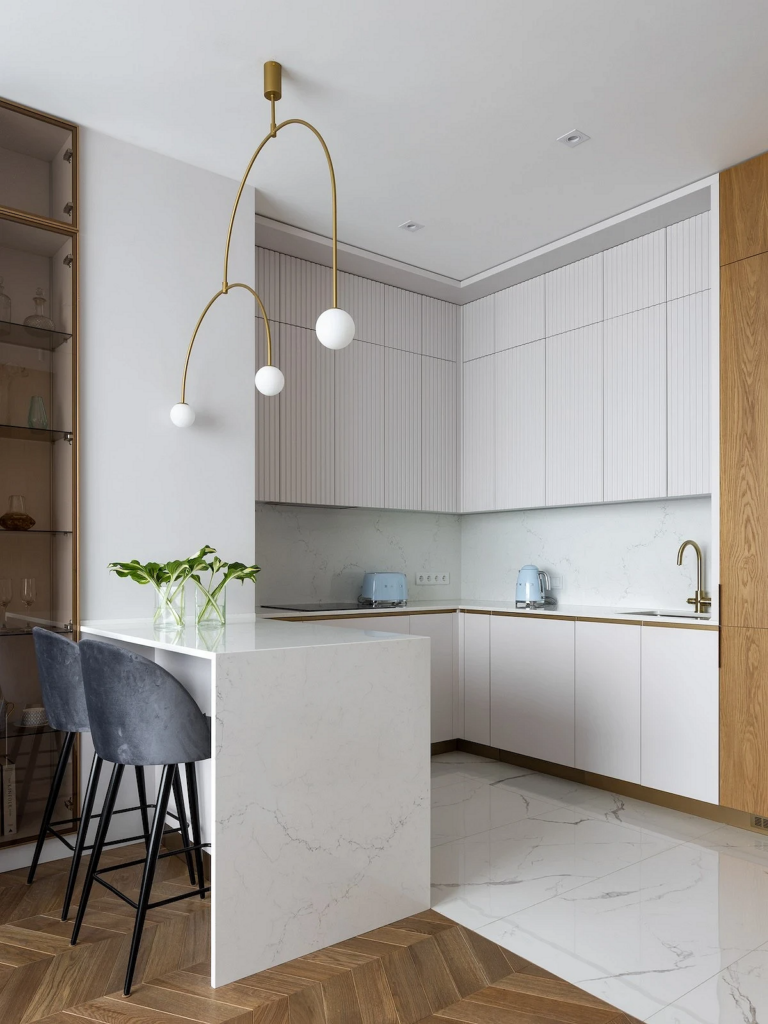
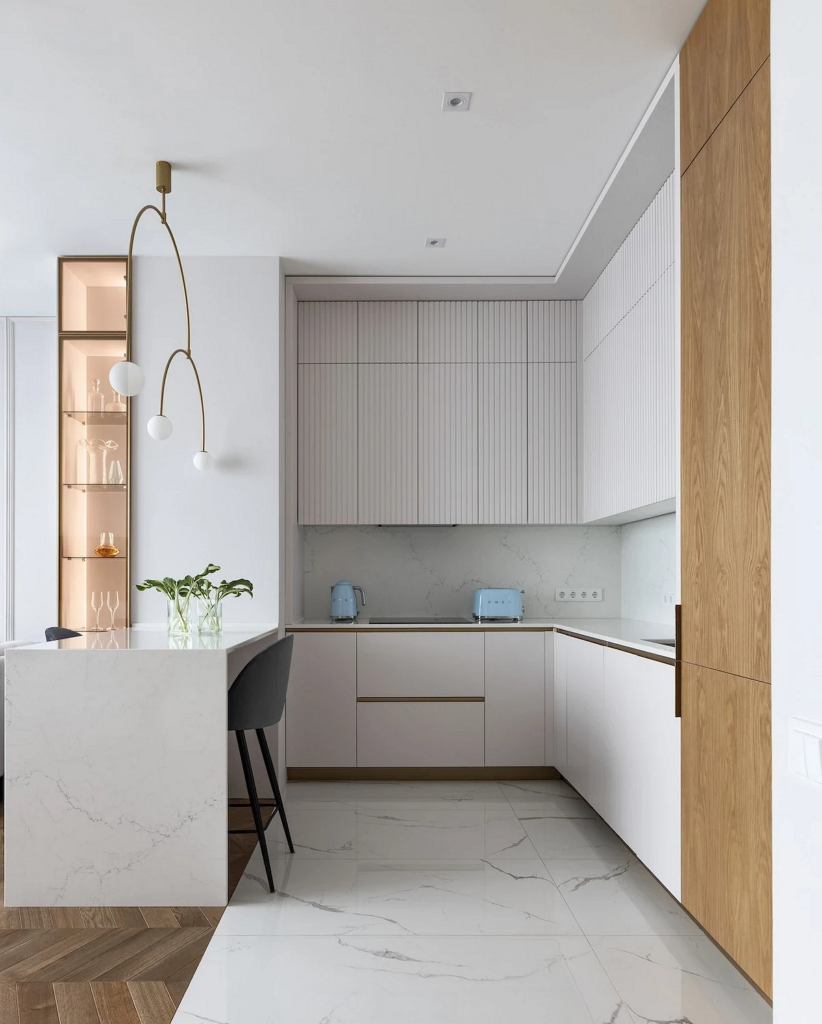
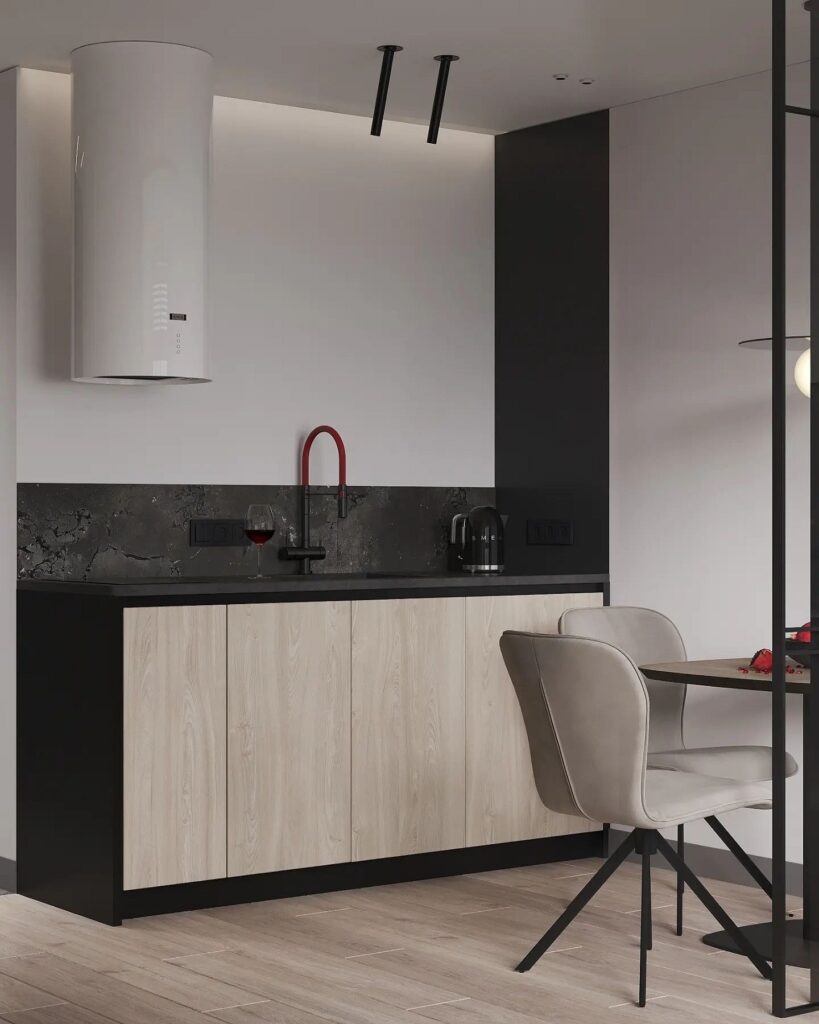
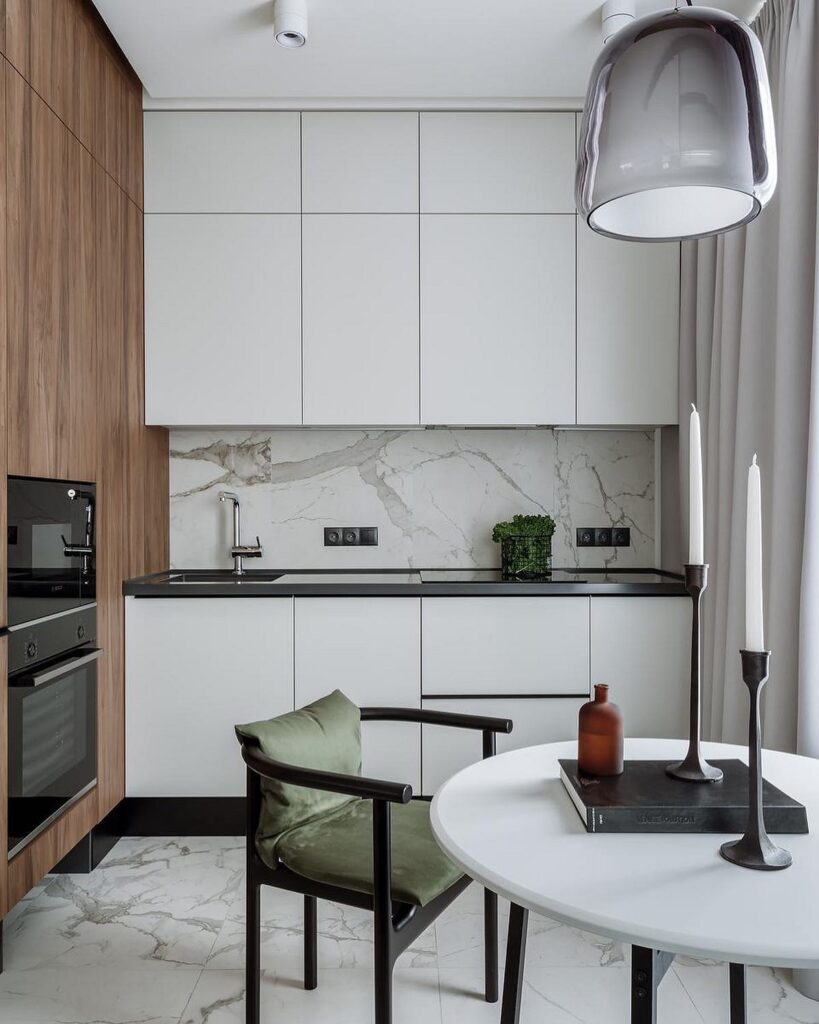
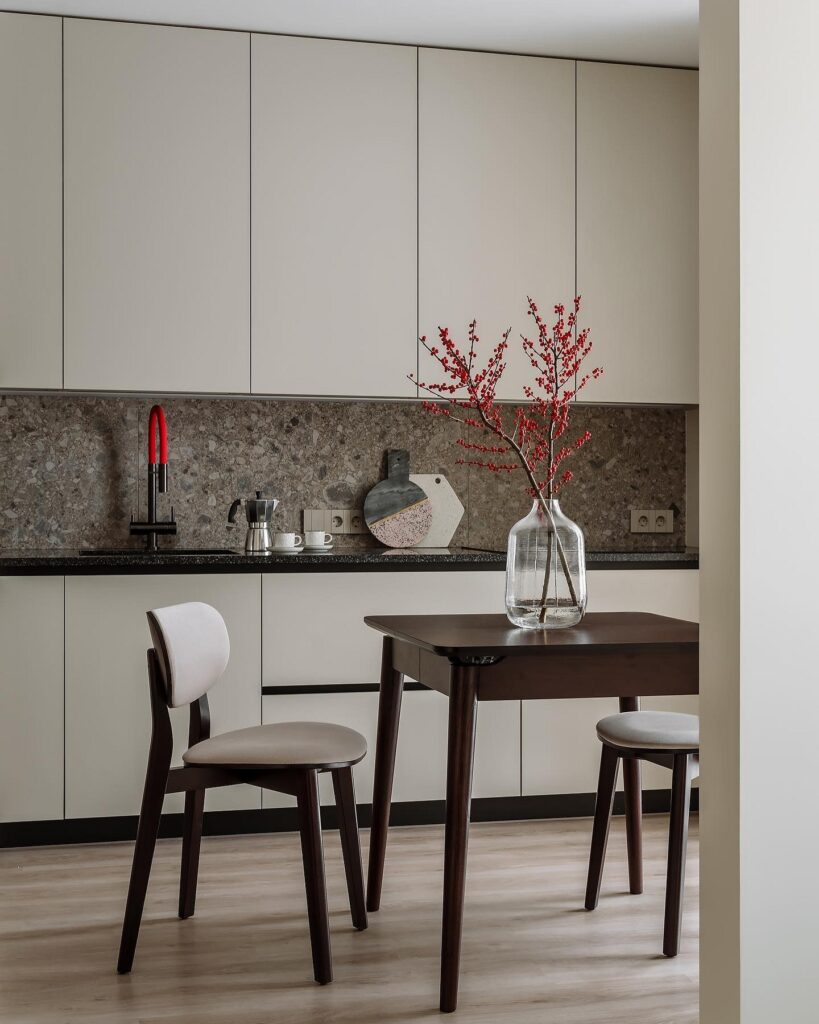
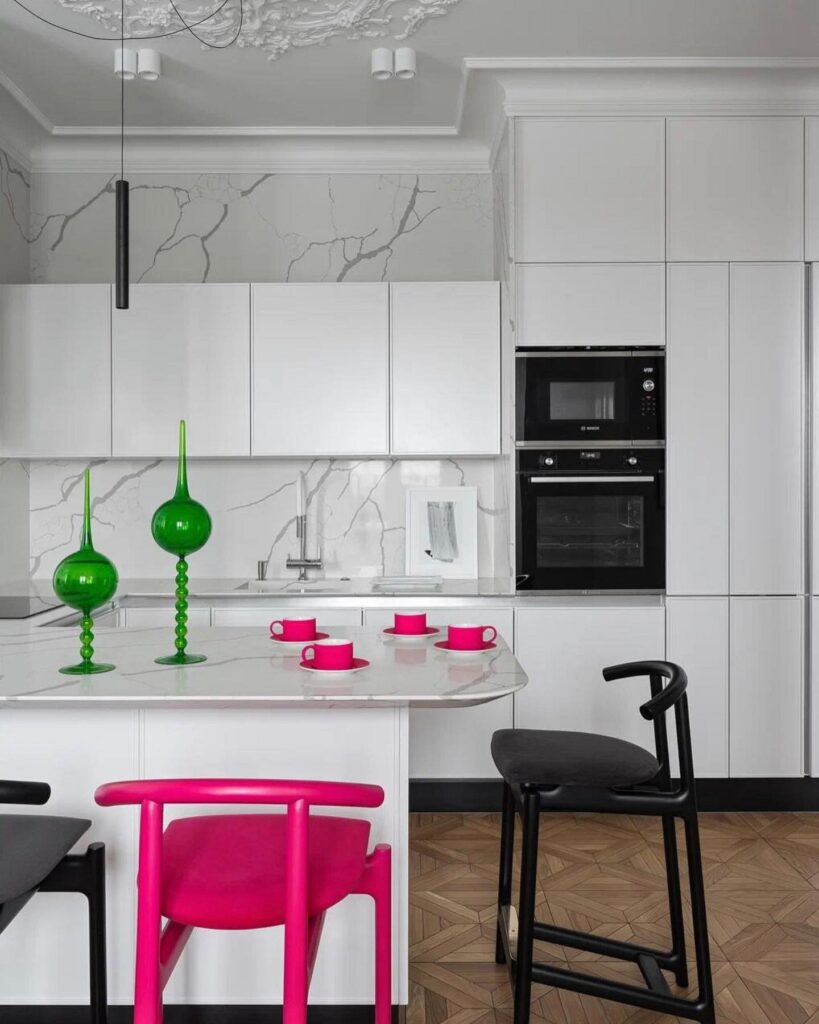
Texture
The lower part of the cabinetry can be glossy or matte, uniform or varied.
A smooth surface without any pattern is the safest option. It suits both modern styles and neoclassicism. It looks sleek, a design choice if you want to create a cohesive space with a focus not on bulky furniture, but on something else.
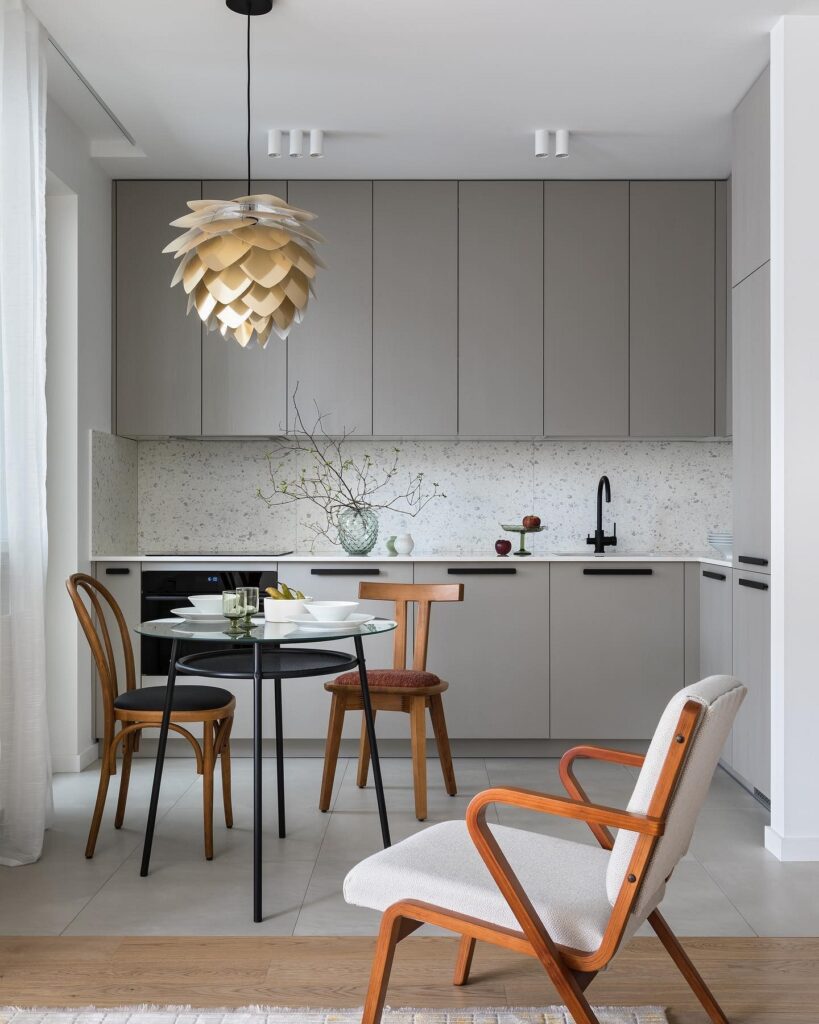
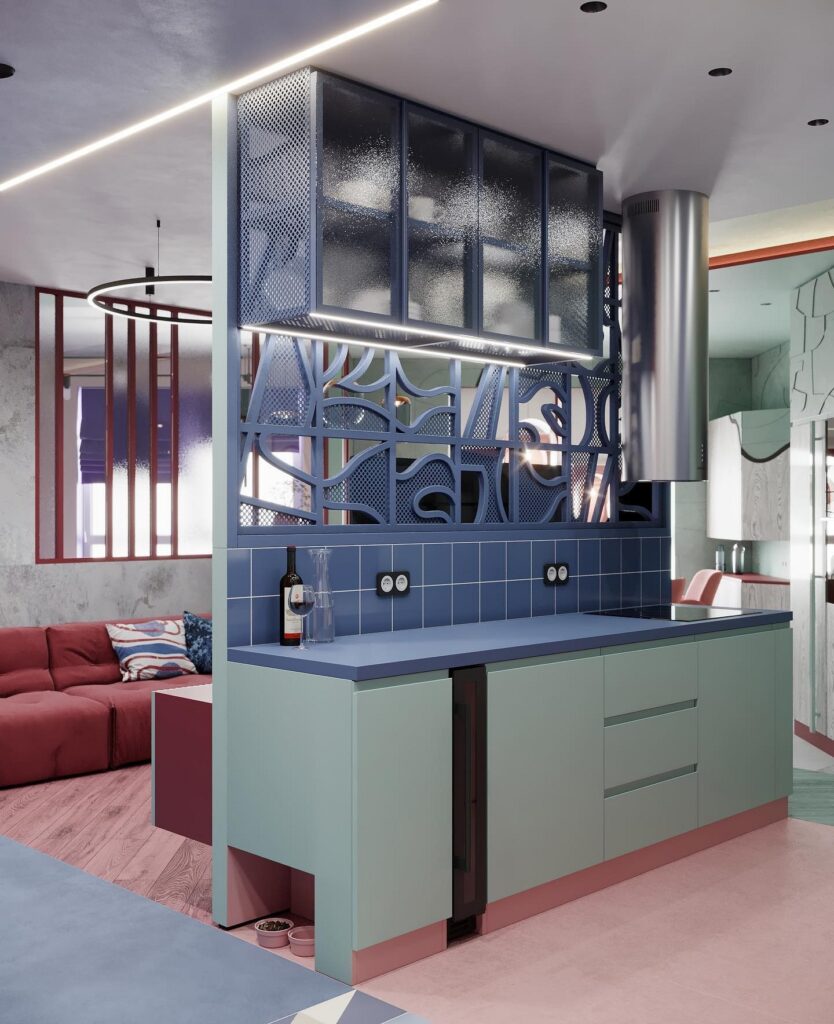

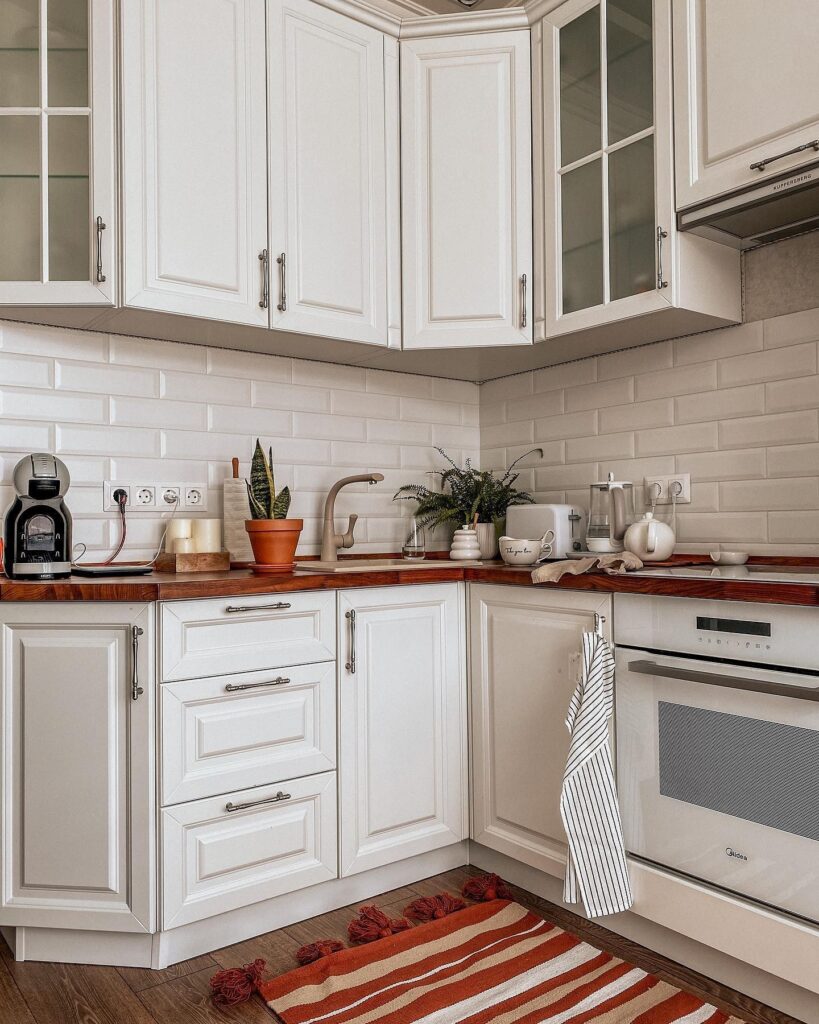
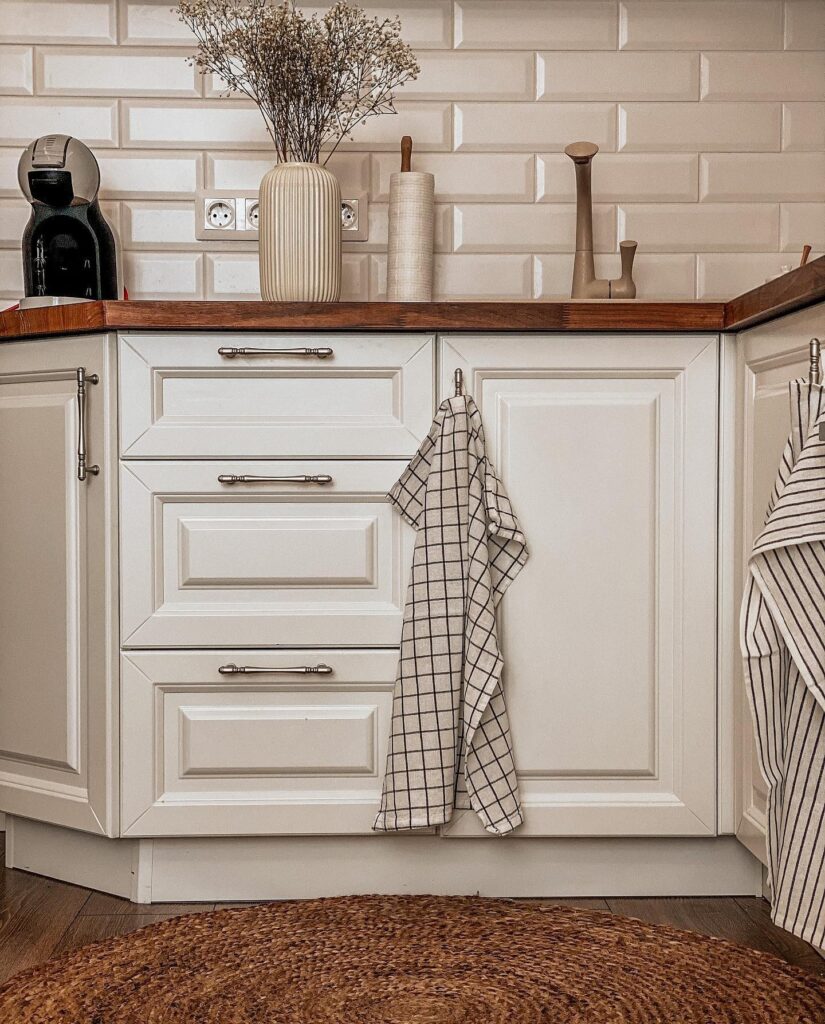
For a more interesting design with a variety of details, a kickboard that imitates different textures—such as wood (a great option for classic styles), stone, or concrete—is suitable. Currently, strips that mimic gold, brass, or other precious metals are also popular.
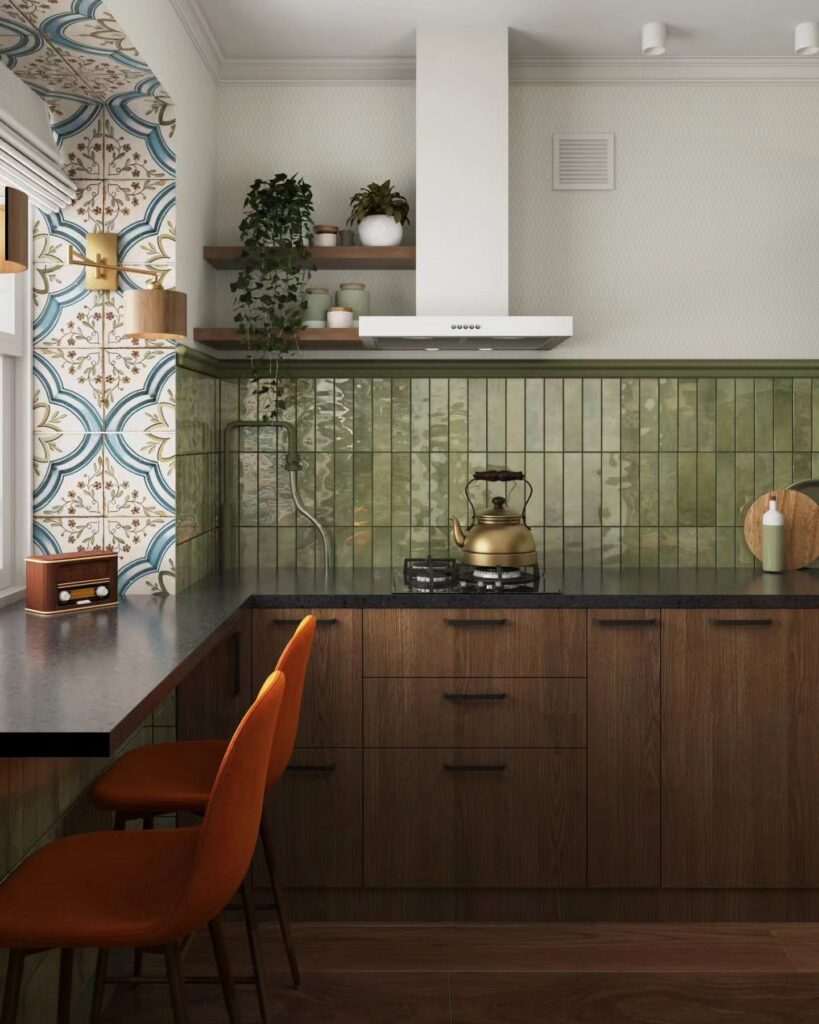

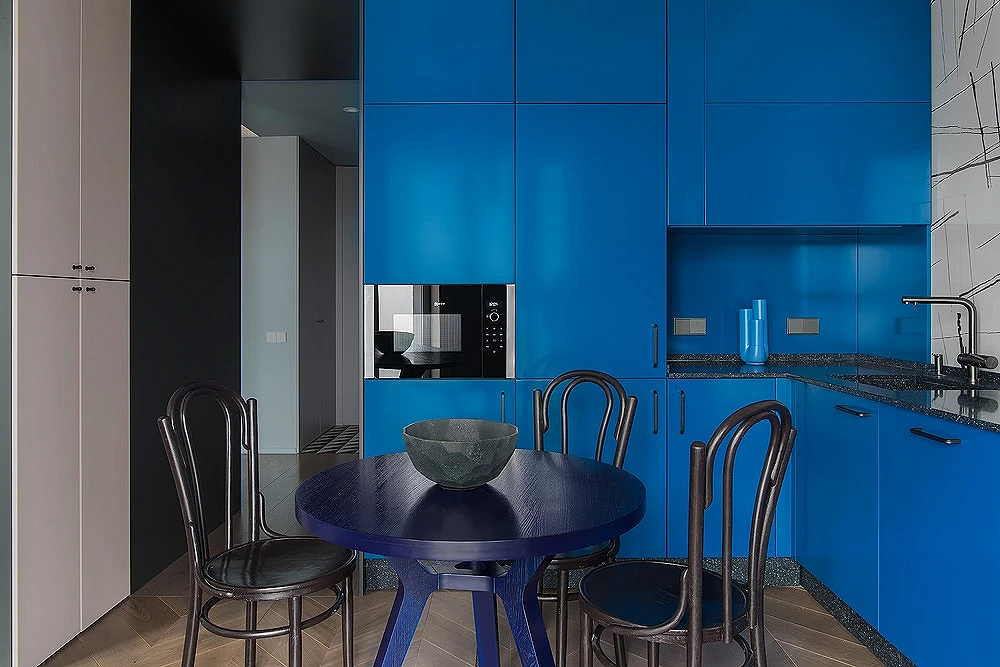
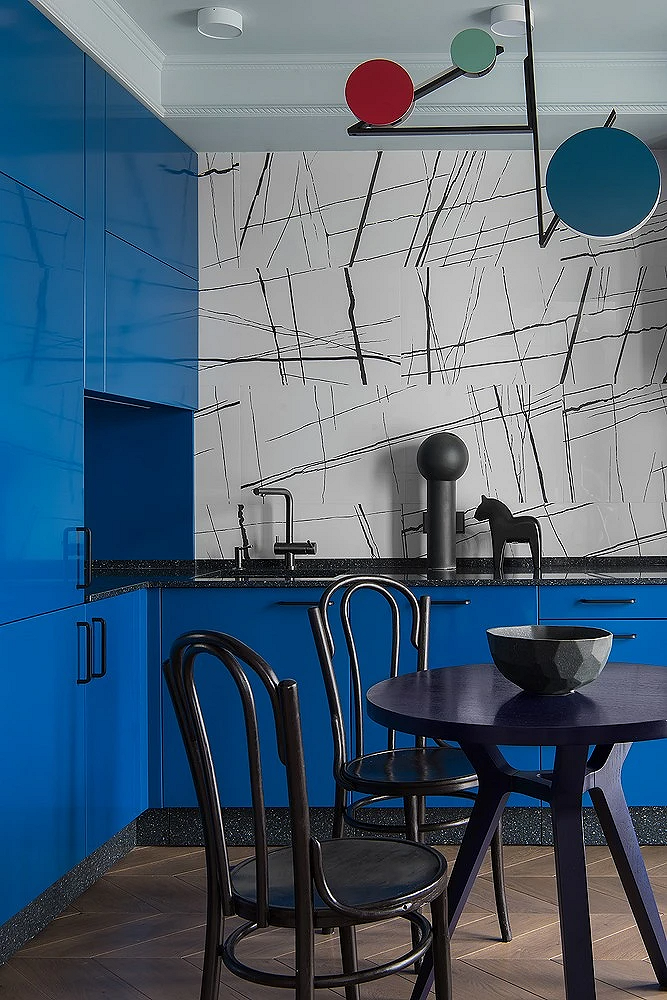
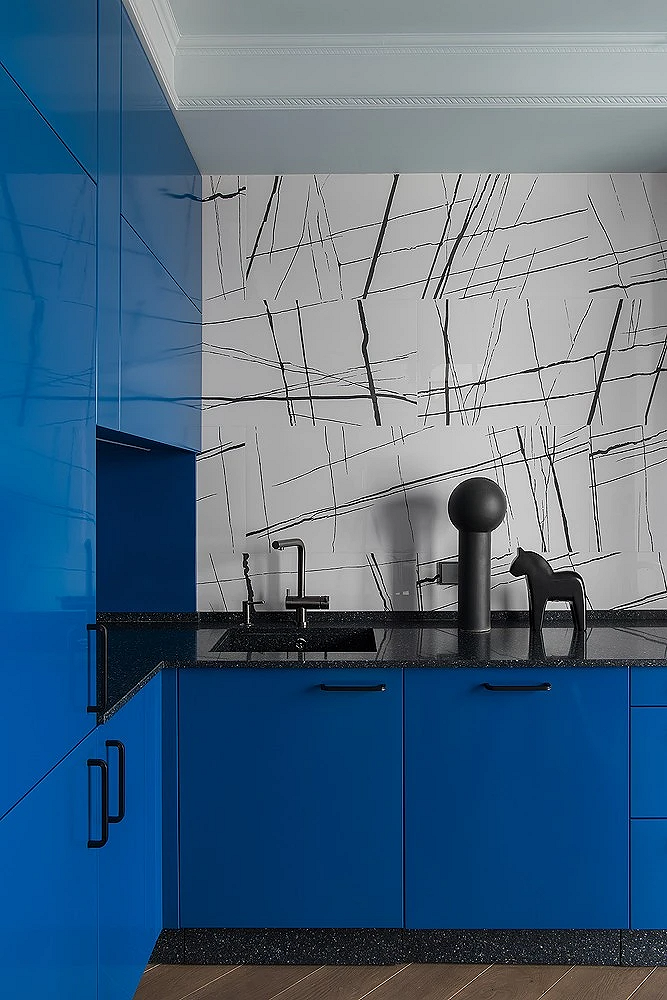
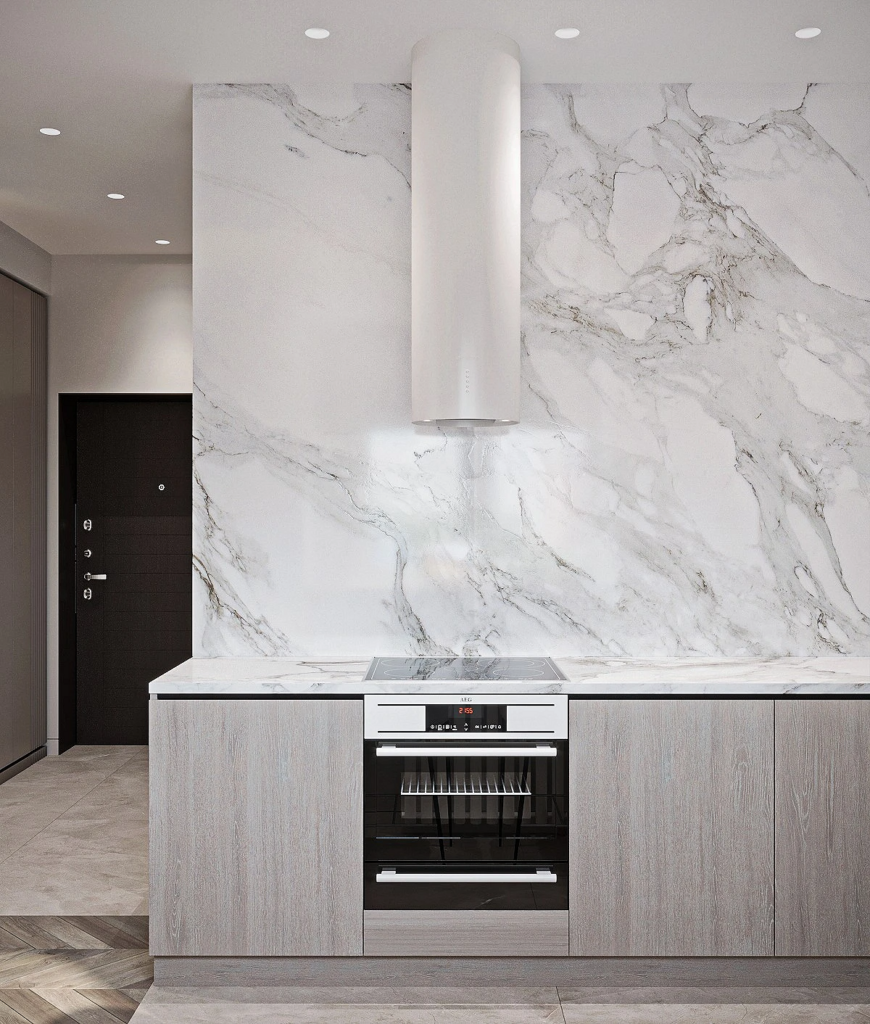


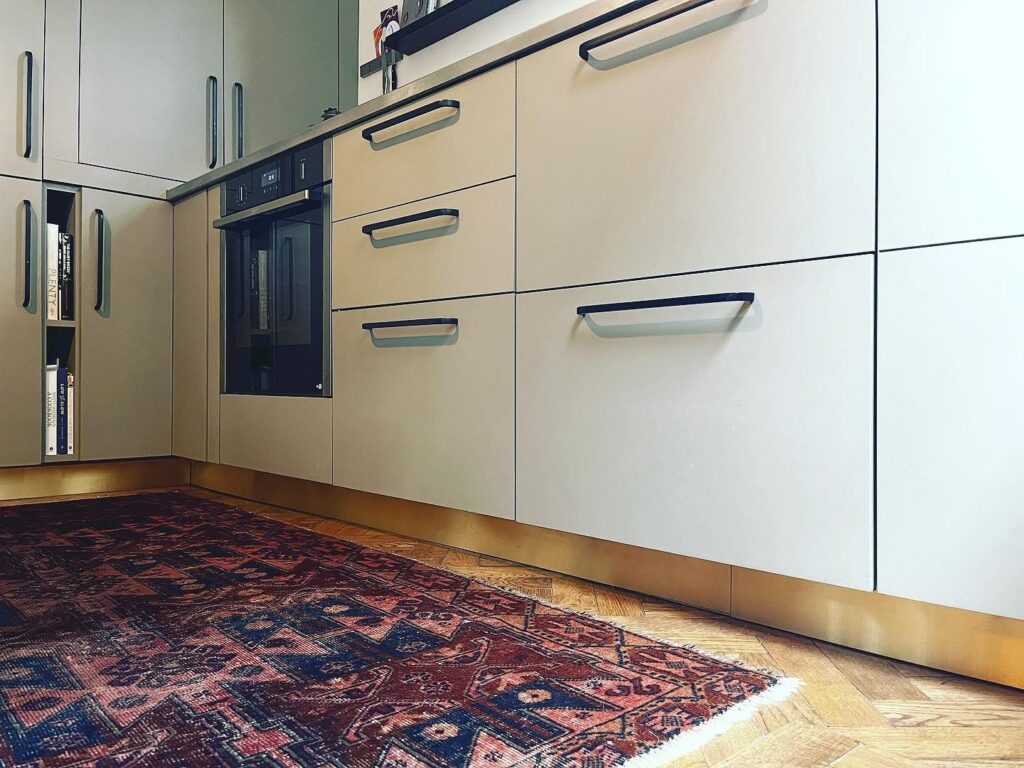
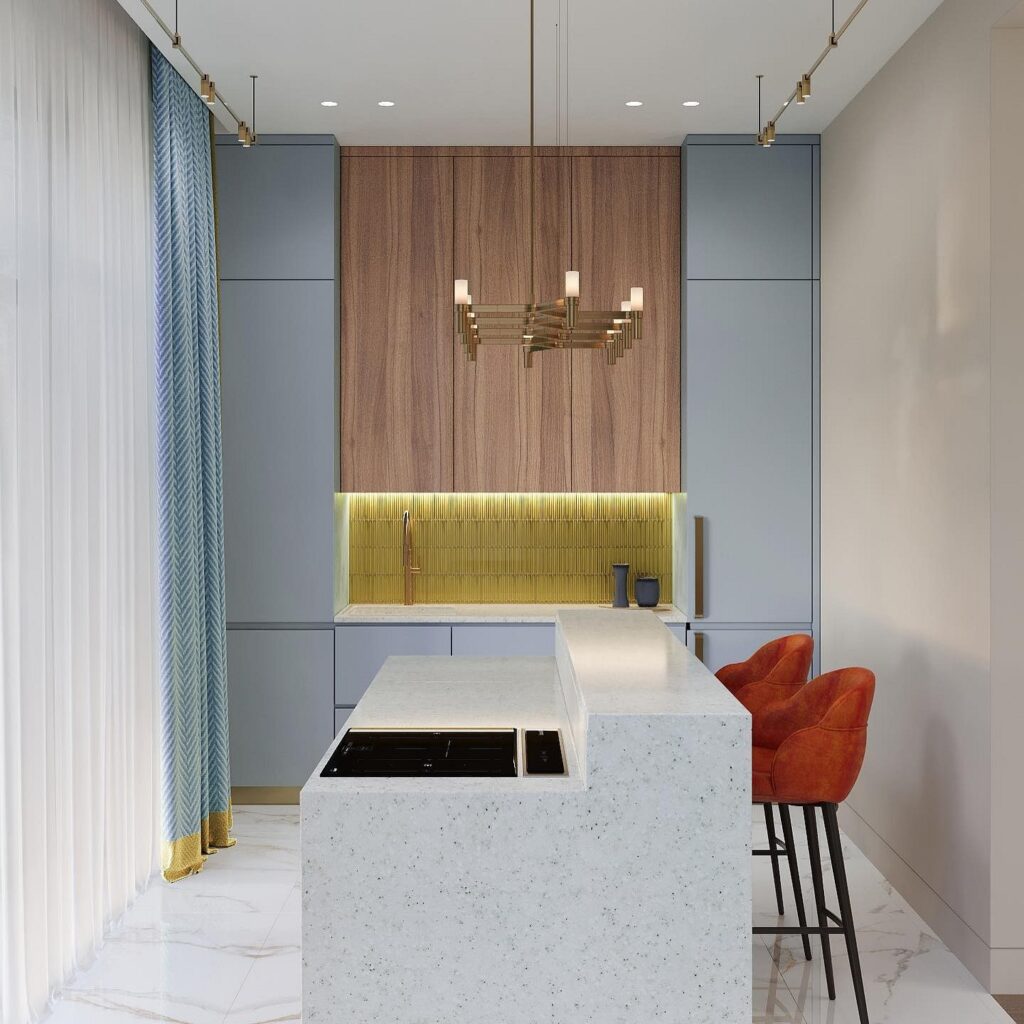
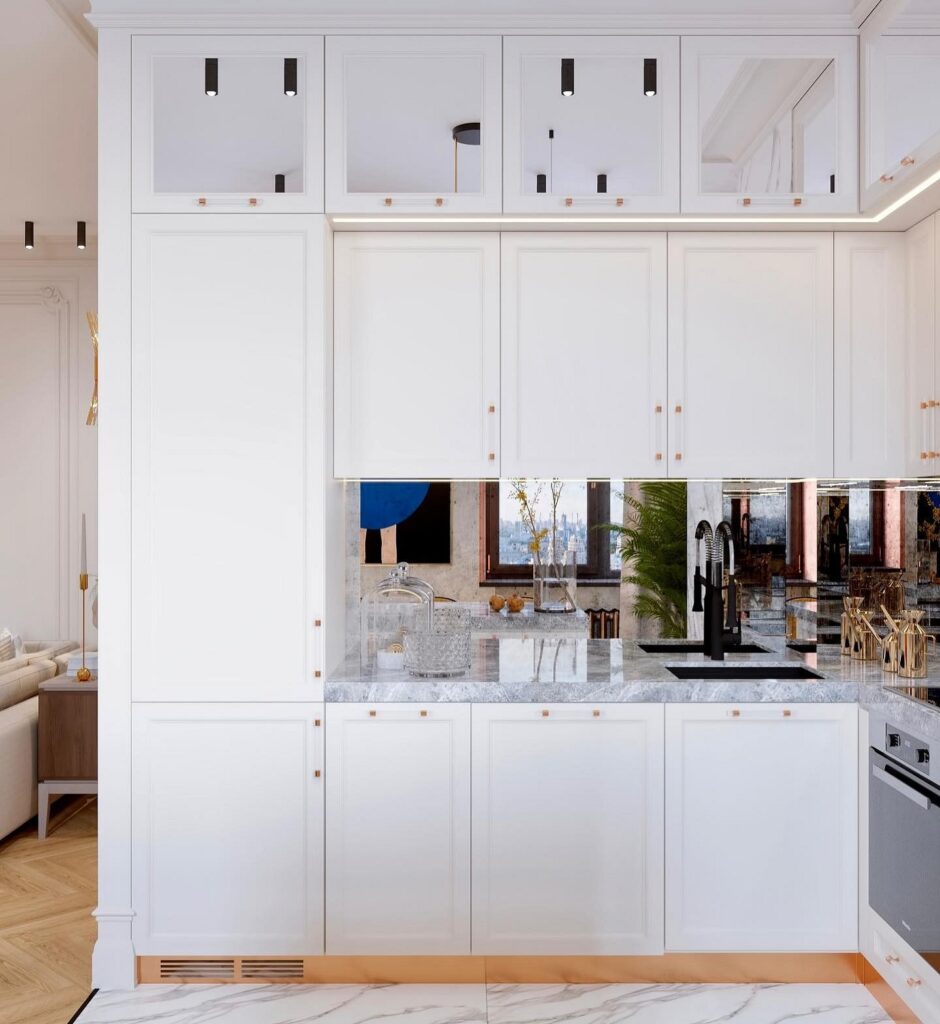
Finally, a striking design option that immediately catches the eye is a mirrored strip. It doesn’t necessarily have to be a full mirror: a simply reflective surface where silhouettes and light spots from the window are visible will suffice.
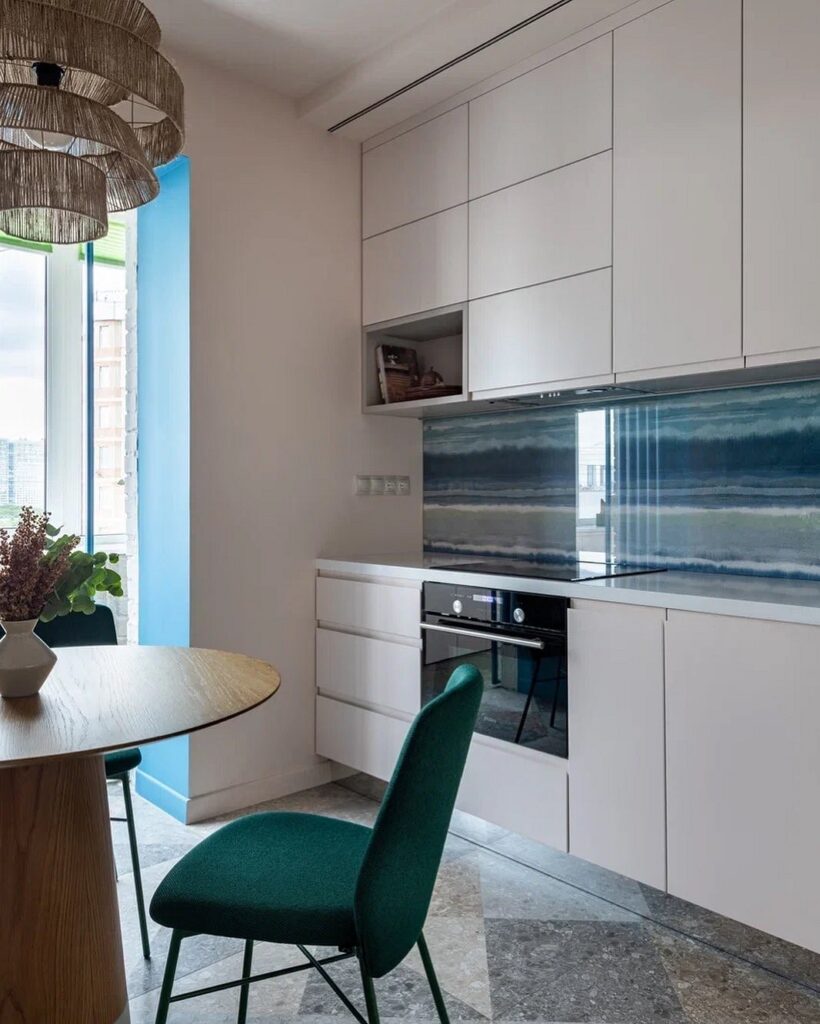
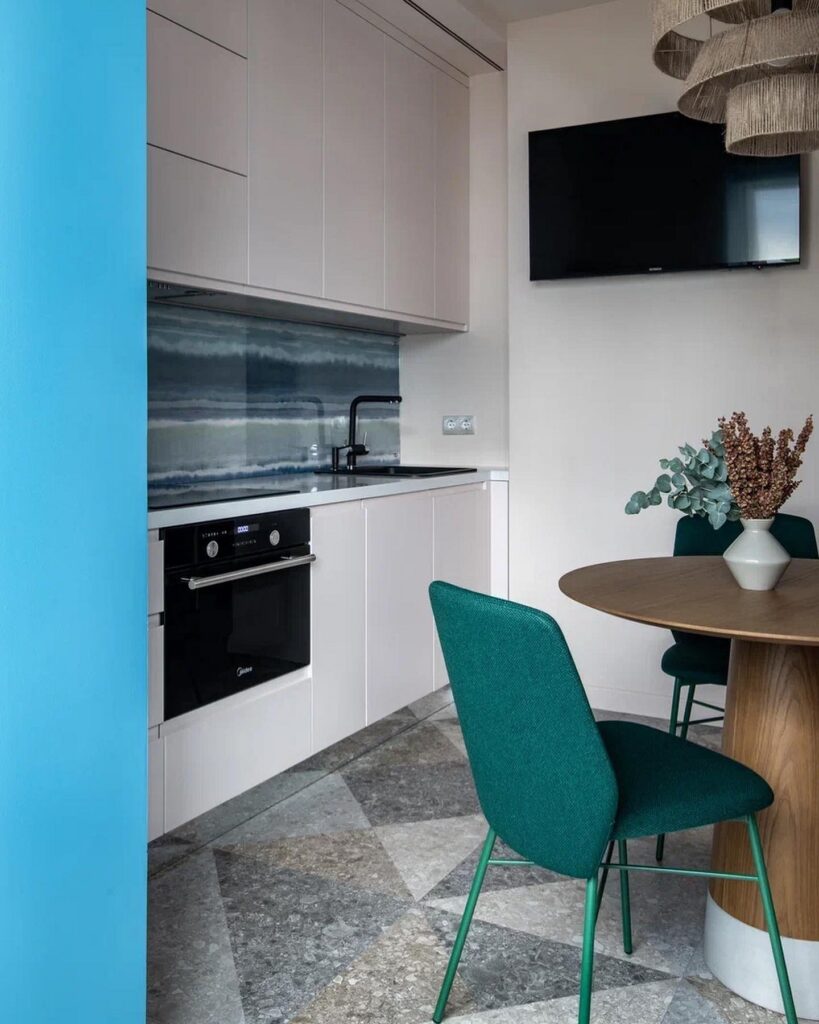
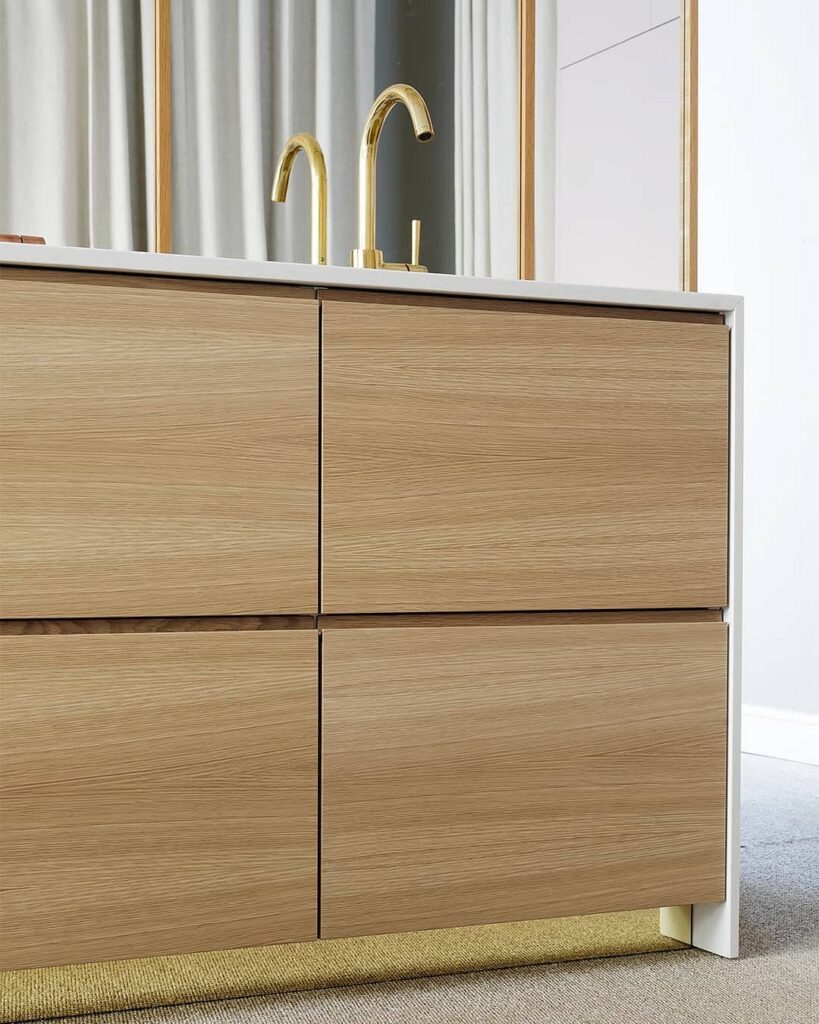
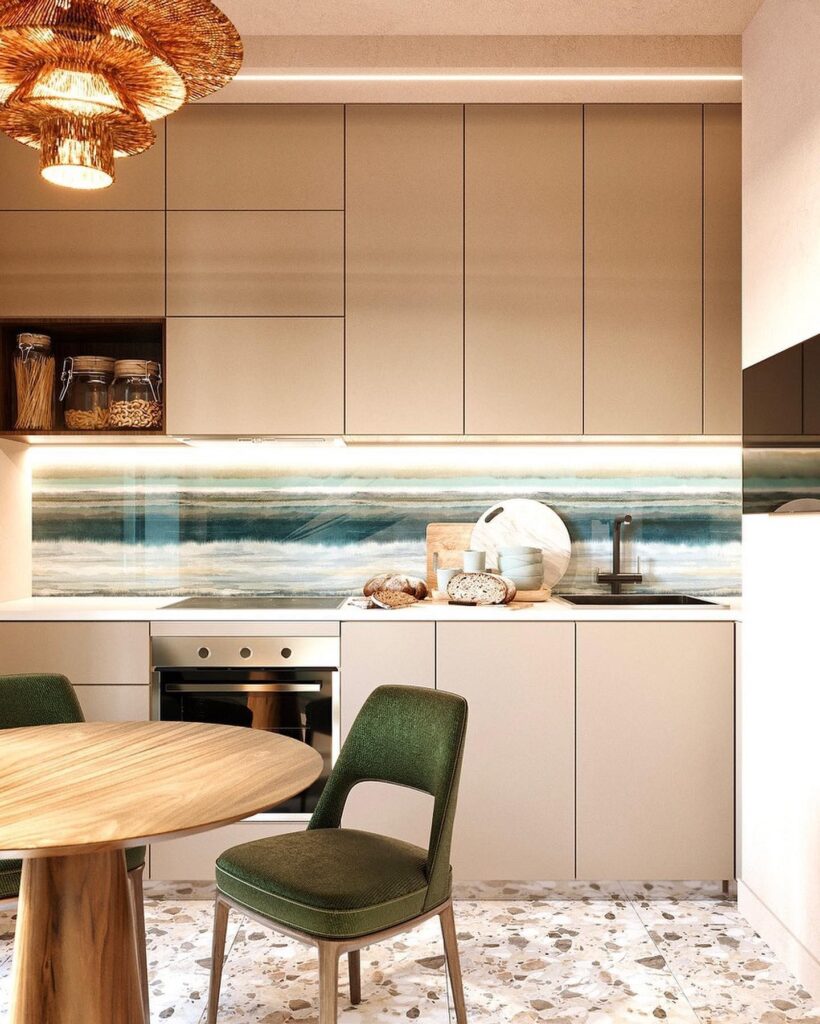
Functionality
The kickboard of a kitchen cabinetry is primarily a decorative element, but if necessary, it can also provide additional storage space.
A functional version of the lower strip is not just a piece of material 4-6 inches (10-15 cm) [3.94-5.91 inches] high, but full-fledged drawers, known as toe-kick drawers. Due to the limited height, you can store only suitably sized items inside. For example:
- Flat plates and saucers.
- Baking trays, molds, and racks.
- Pans and lids.
- Rolls of foil, baking paper, and cling film.
- Kitchen textiles, etc.
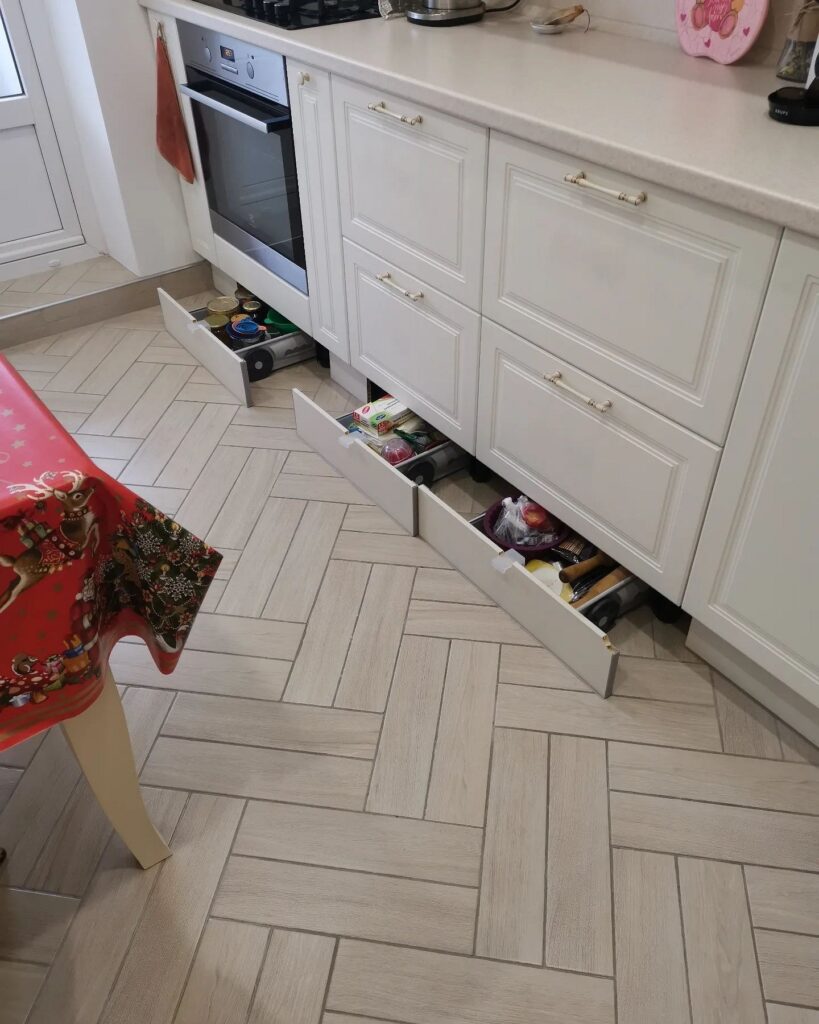
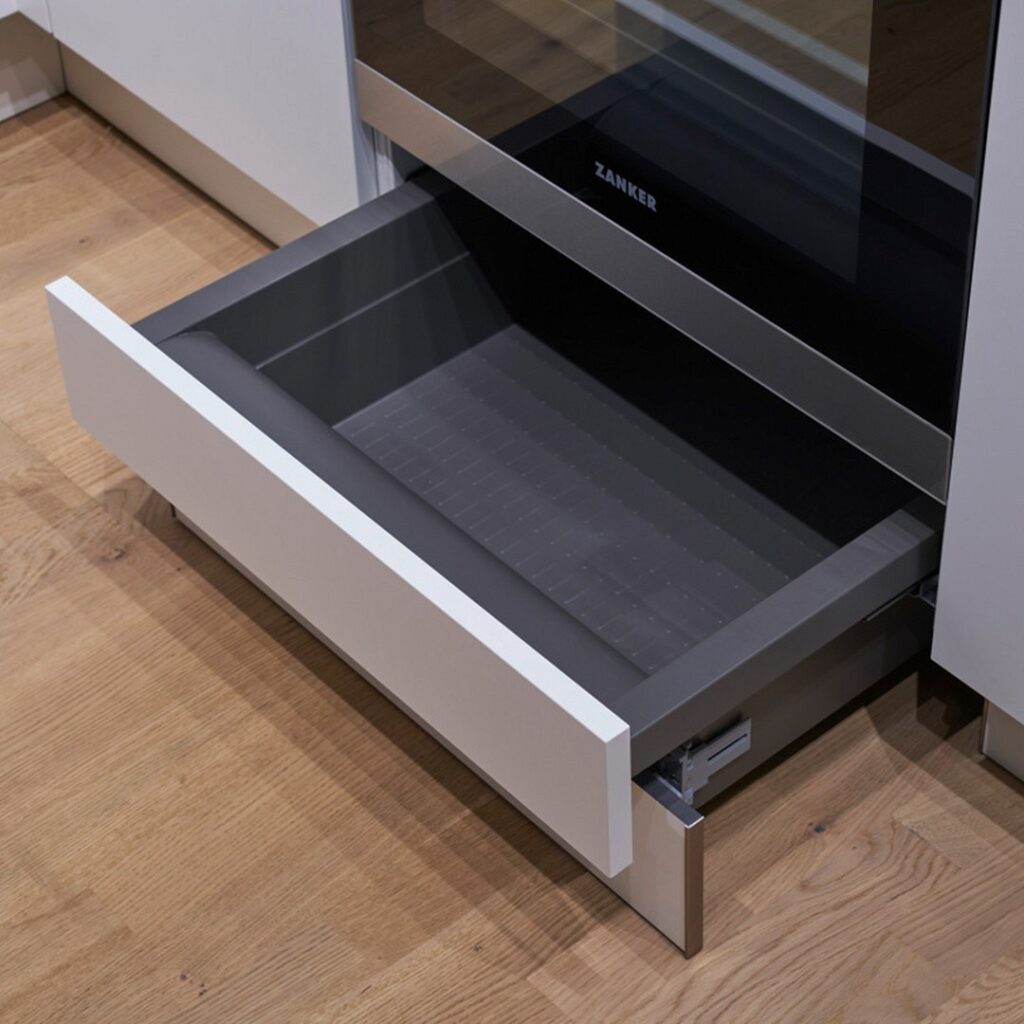
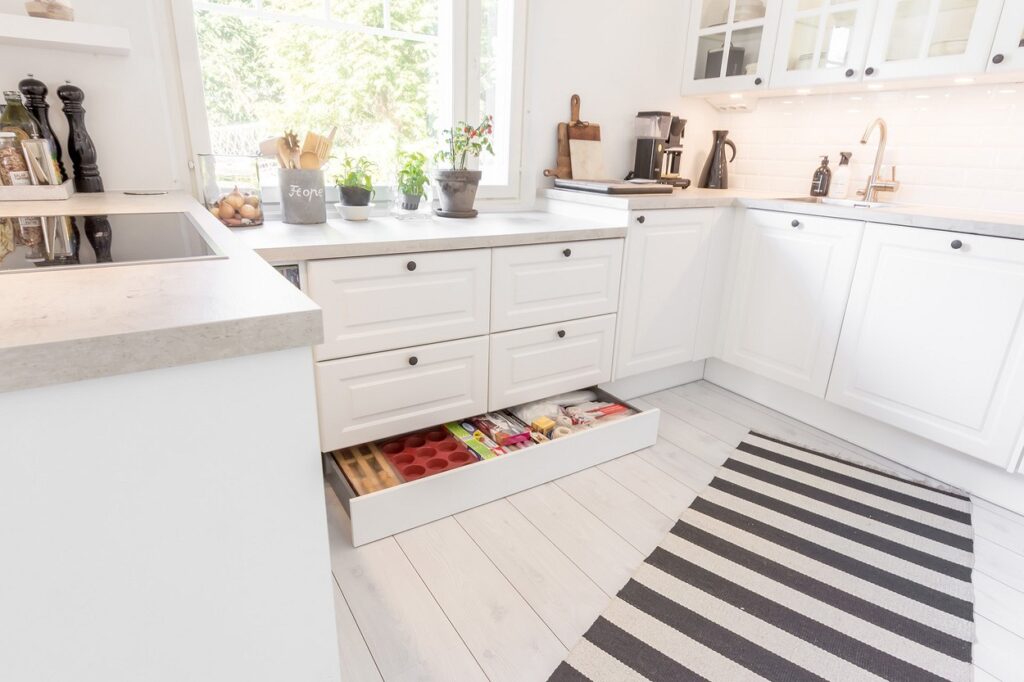
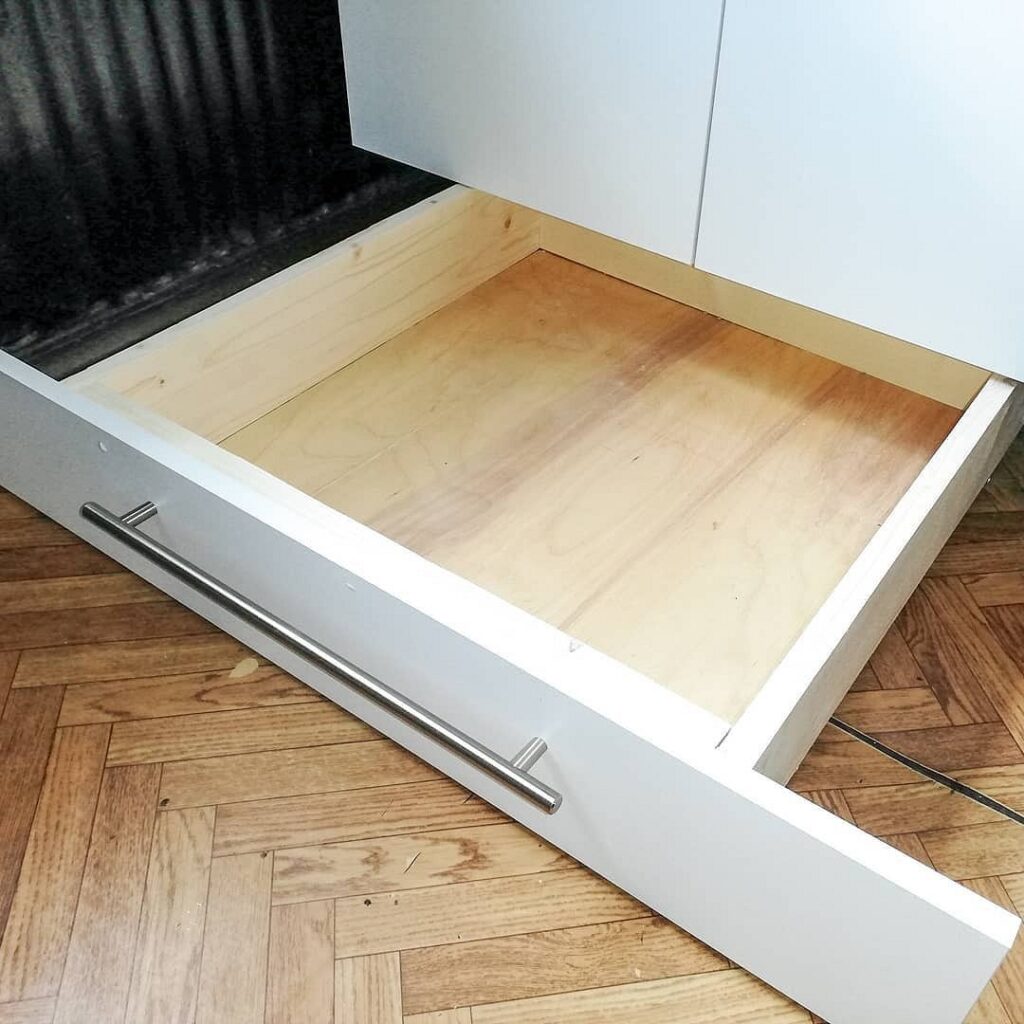
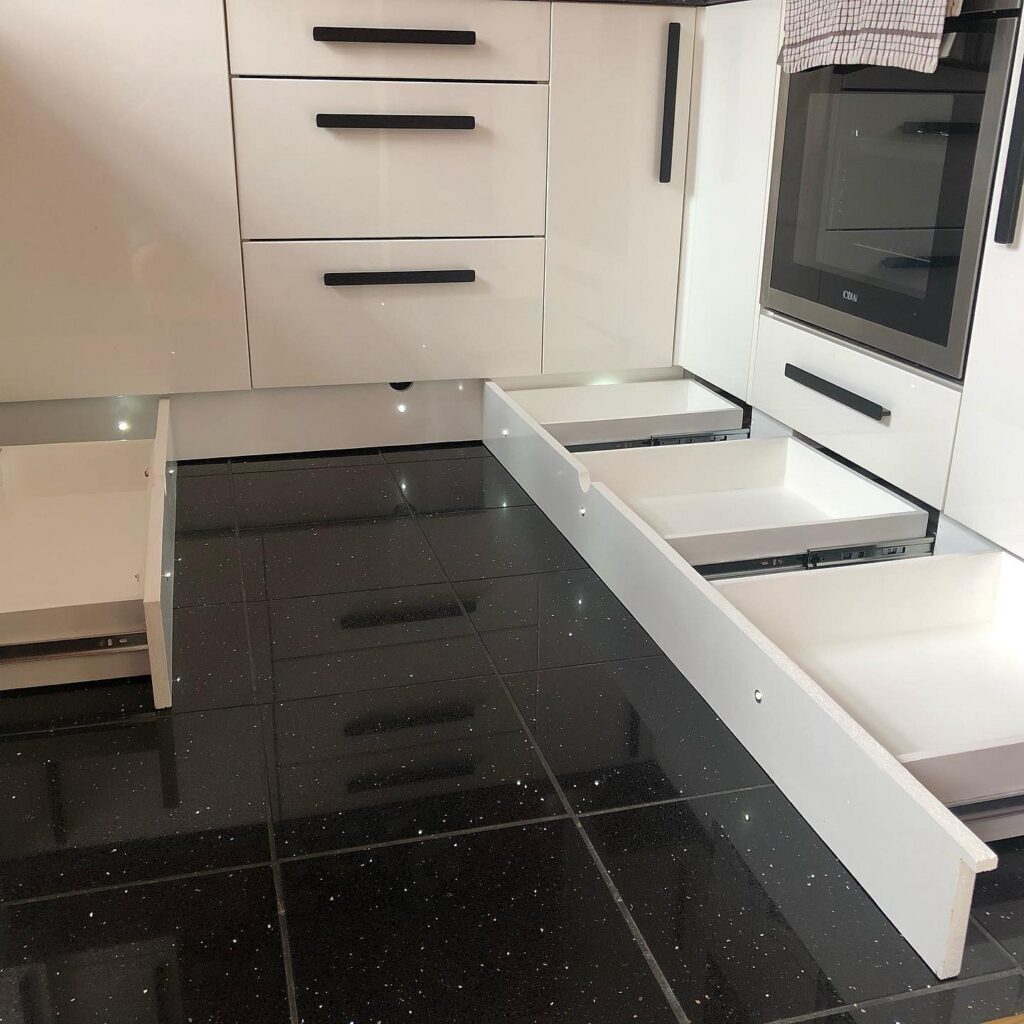
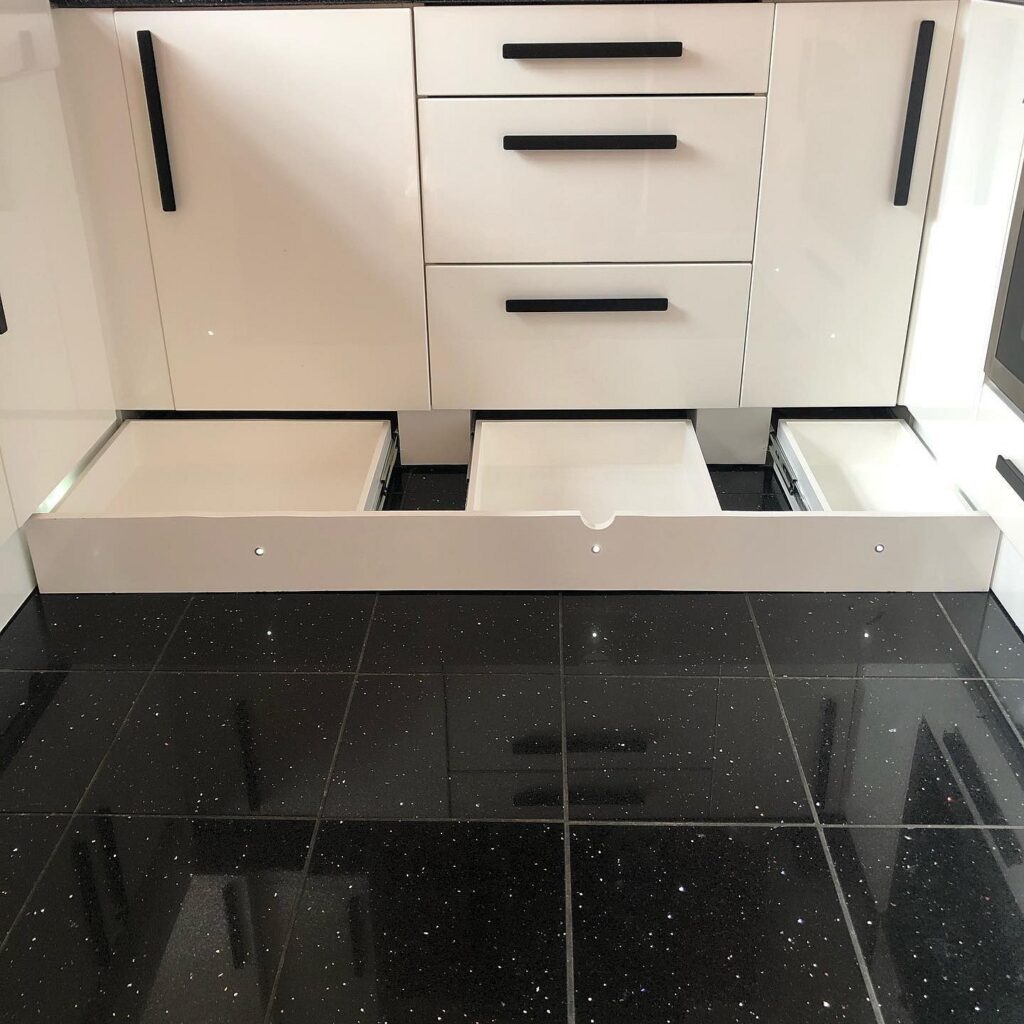
If you’re getting a custom kitchen, you can also devise original constructions tailored to your lifestyle: for example, compartments for wine bottles, a robot vacuum cleaner, or pull-out bowls for a pet. Low drawers are also good for storing crops like potatoes, onions, beets, and other vegetables that need darkness and room temperature. Additionally, a ventilation grille is often installed in the toe-kick.
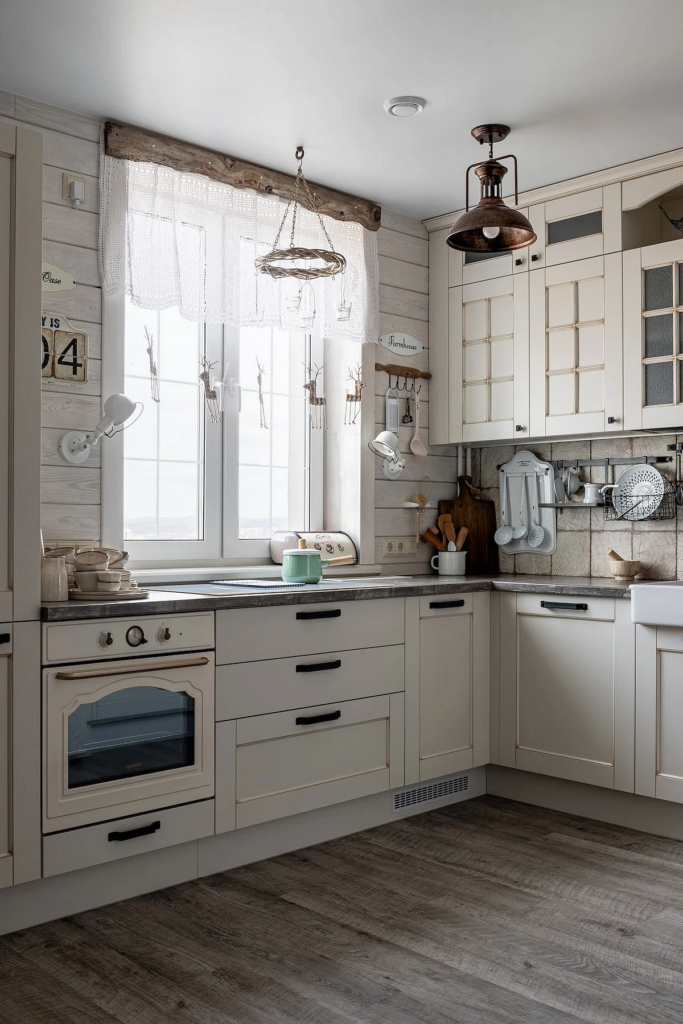
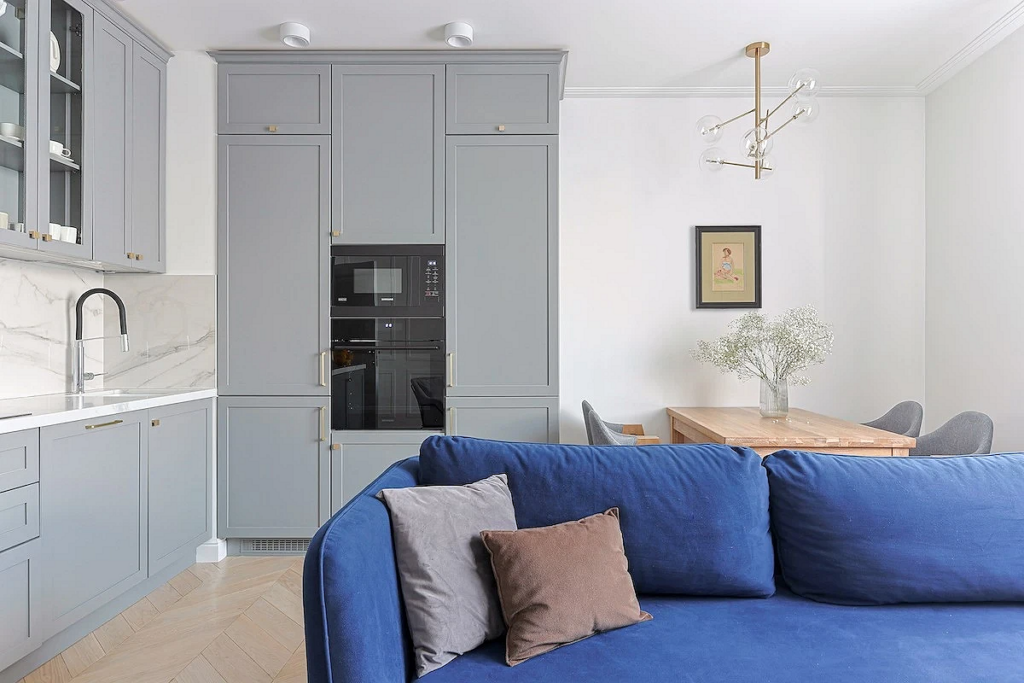
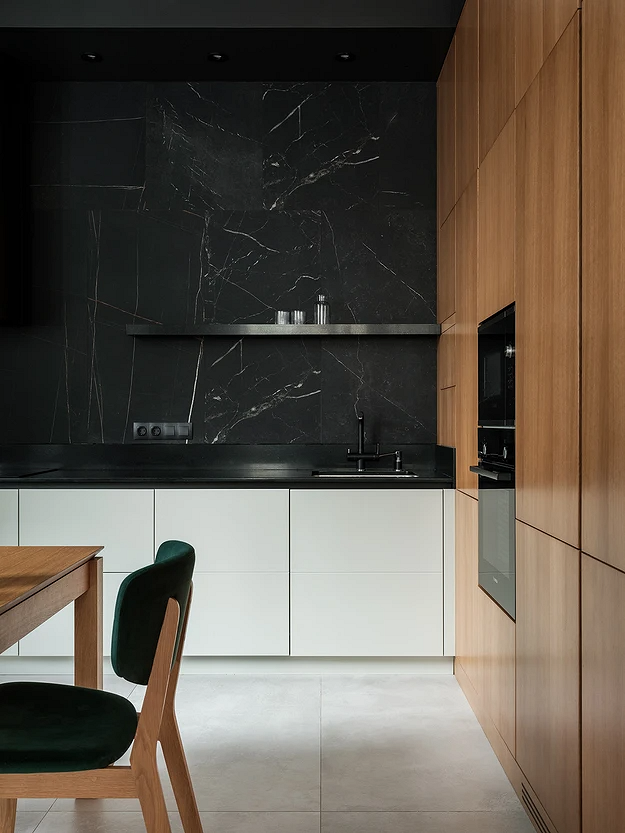
Installation
Installing a kickboard is straightforward, but it’s crucial that the bottom row of cabinets is level and the legs are at a uniform height.
If everything is in order, you can proceed with installing the lower part. For this, use special double-sided clips: one side attaches to the cabinet leg, the other to the strip. It’s not necessary to attach it to every leg: if the cabinetry is not very long, two ends suffice; if it’s larger, you can add fasteners to 1-2 in the center. Moreover, the legs are not always perfectly aligned, so attaching the strip to each can cause it to wave due to the unevenness.

The kickboard is installed slightly recessed from the lower cabinets usually by 2-3 inches. This is primarily for convenience: so that when you approach the sink, stove, or work surface, you do not bump your feet into an obstacle.
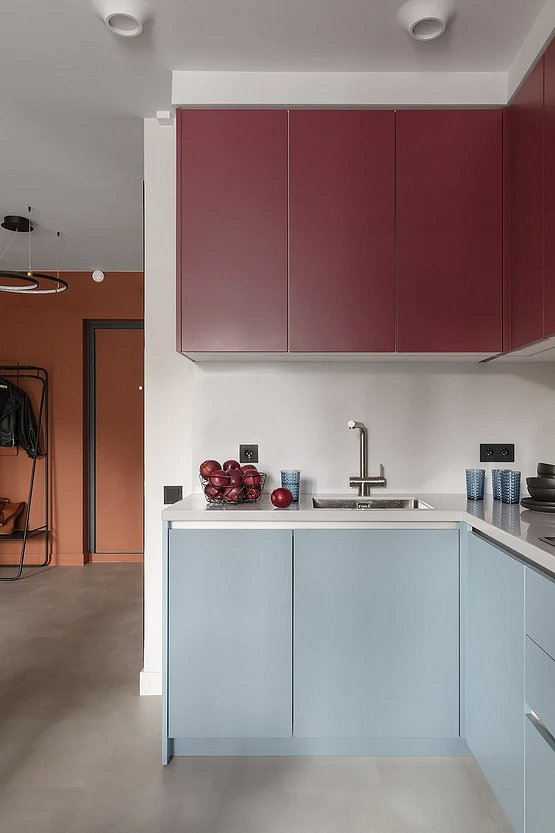
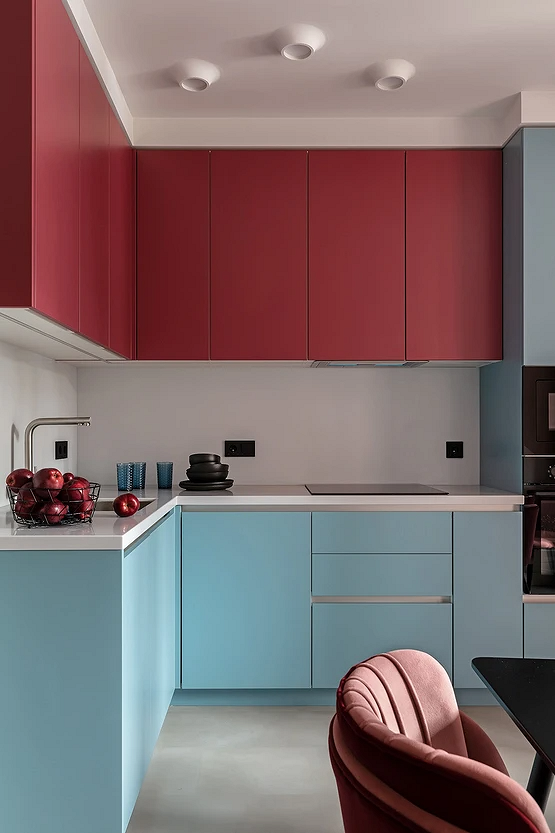
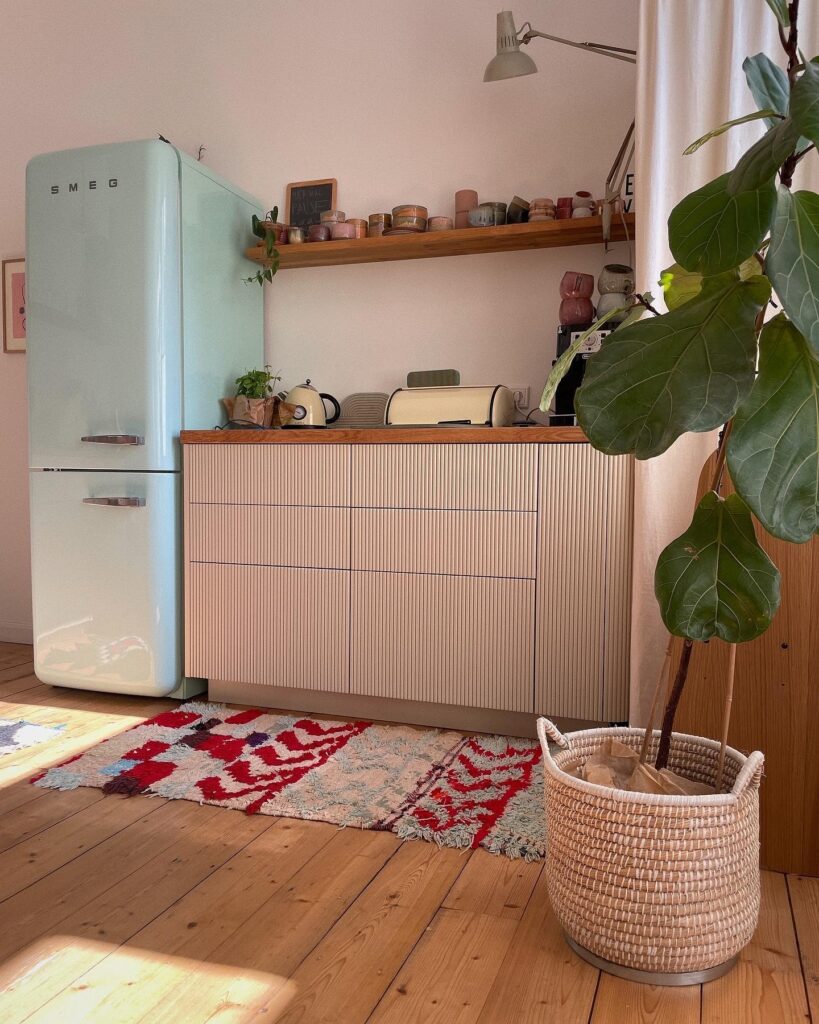
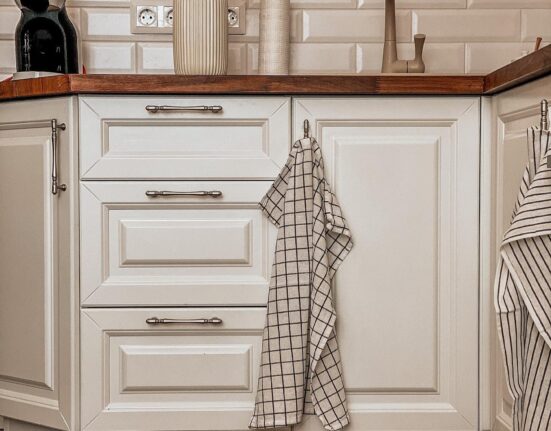
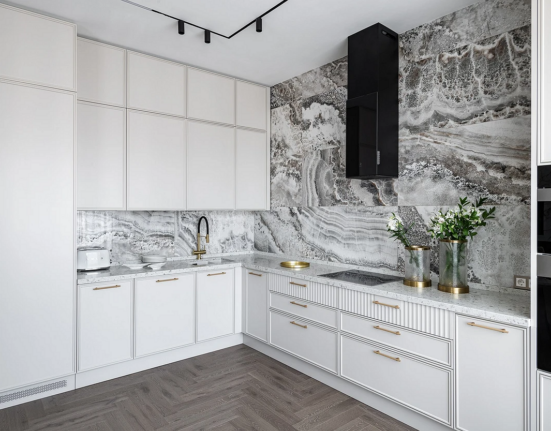
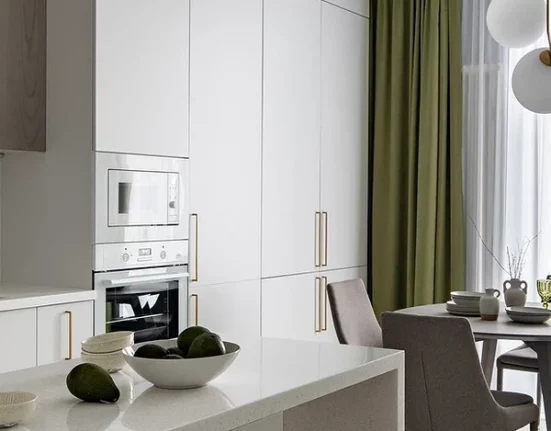
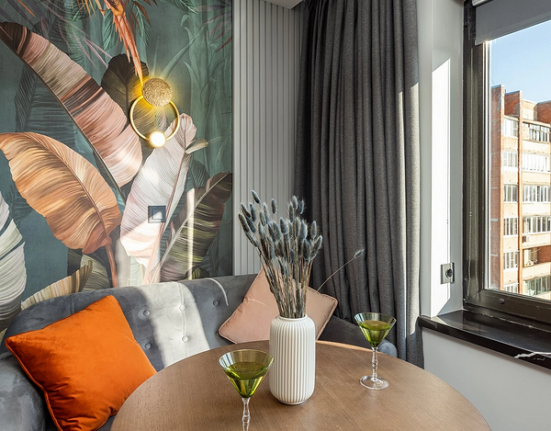
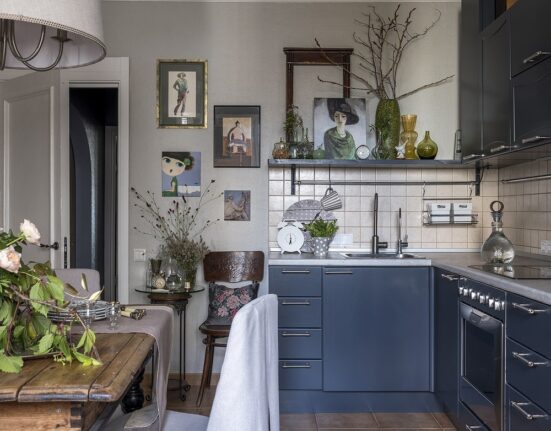
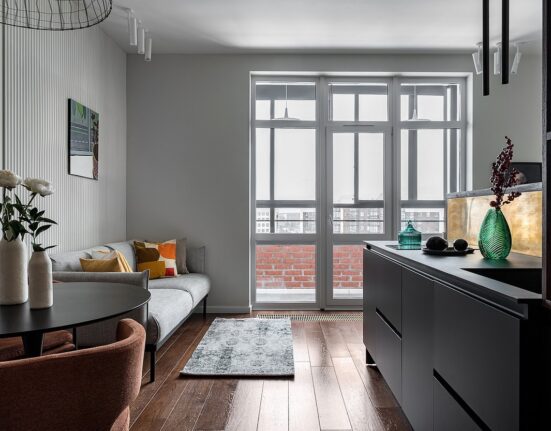
Leave feedback about this